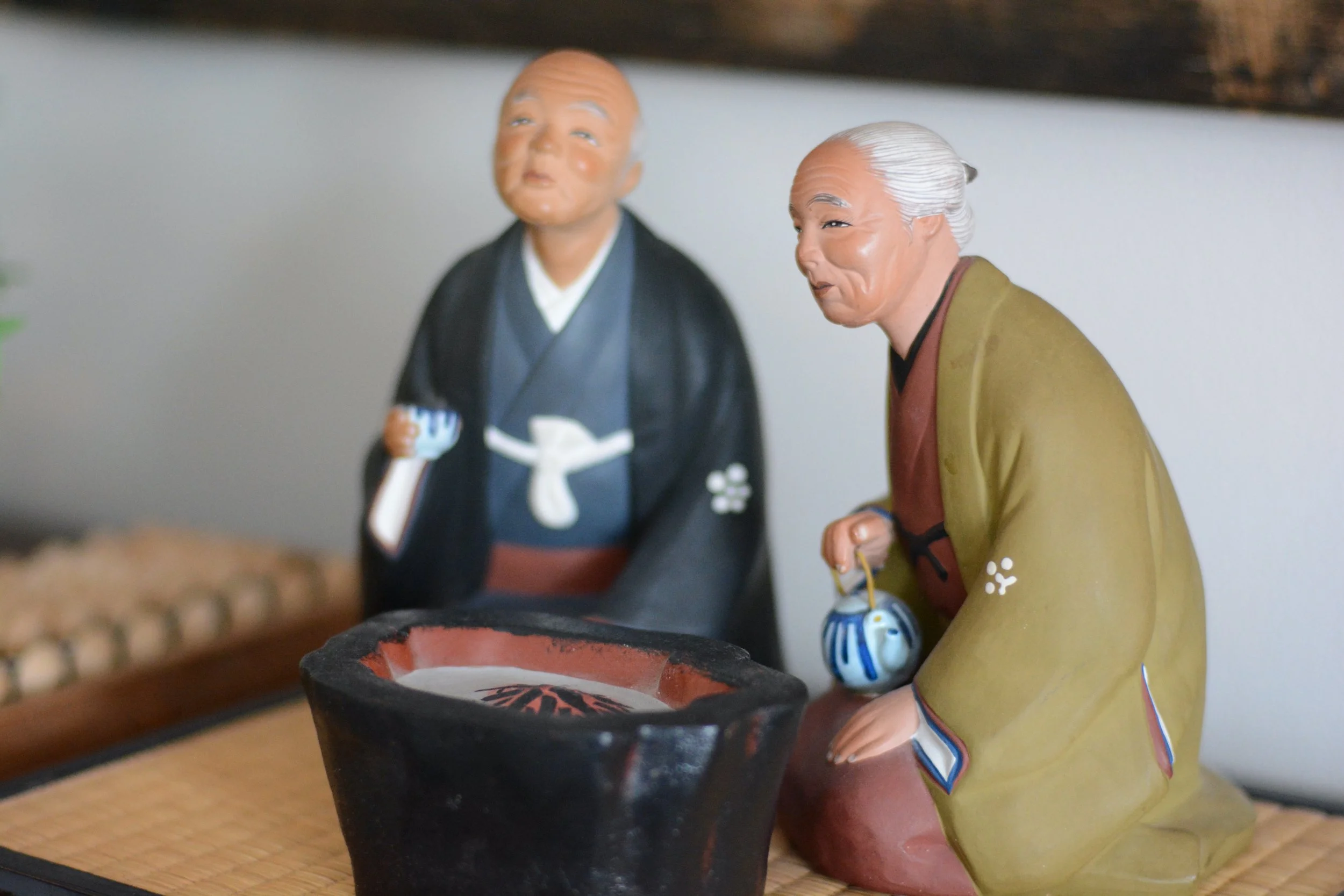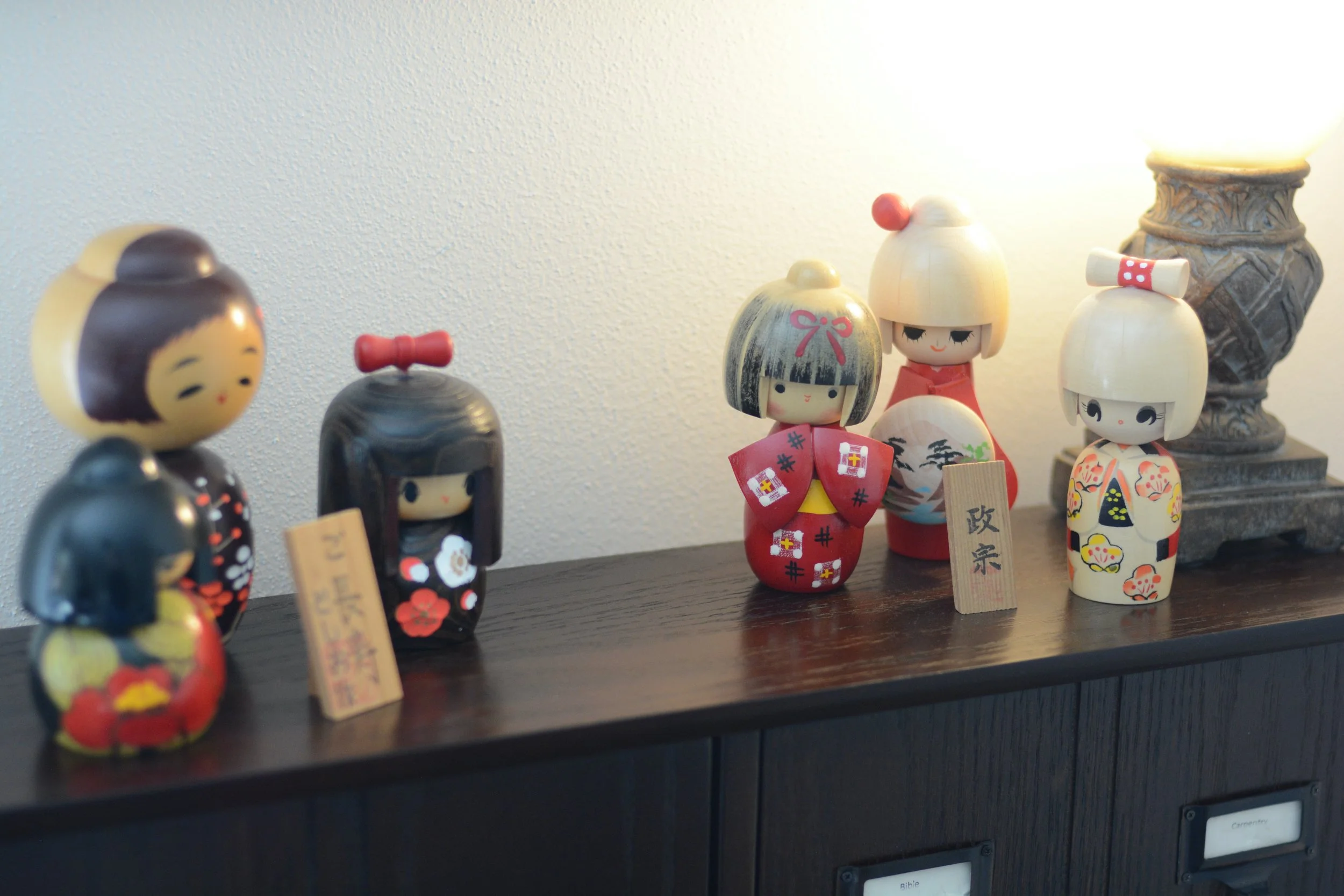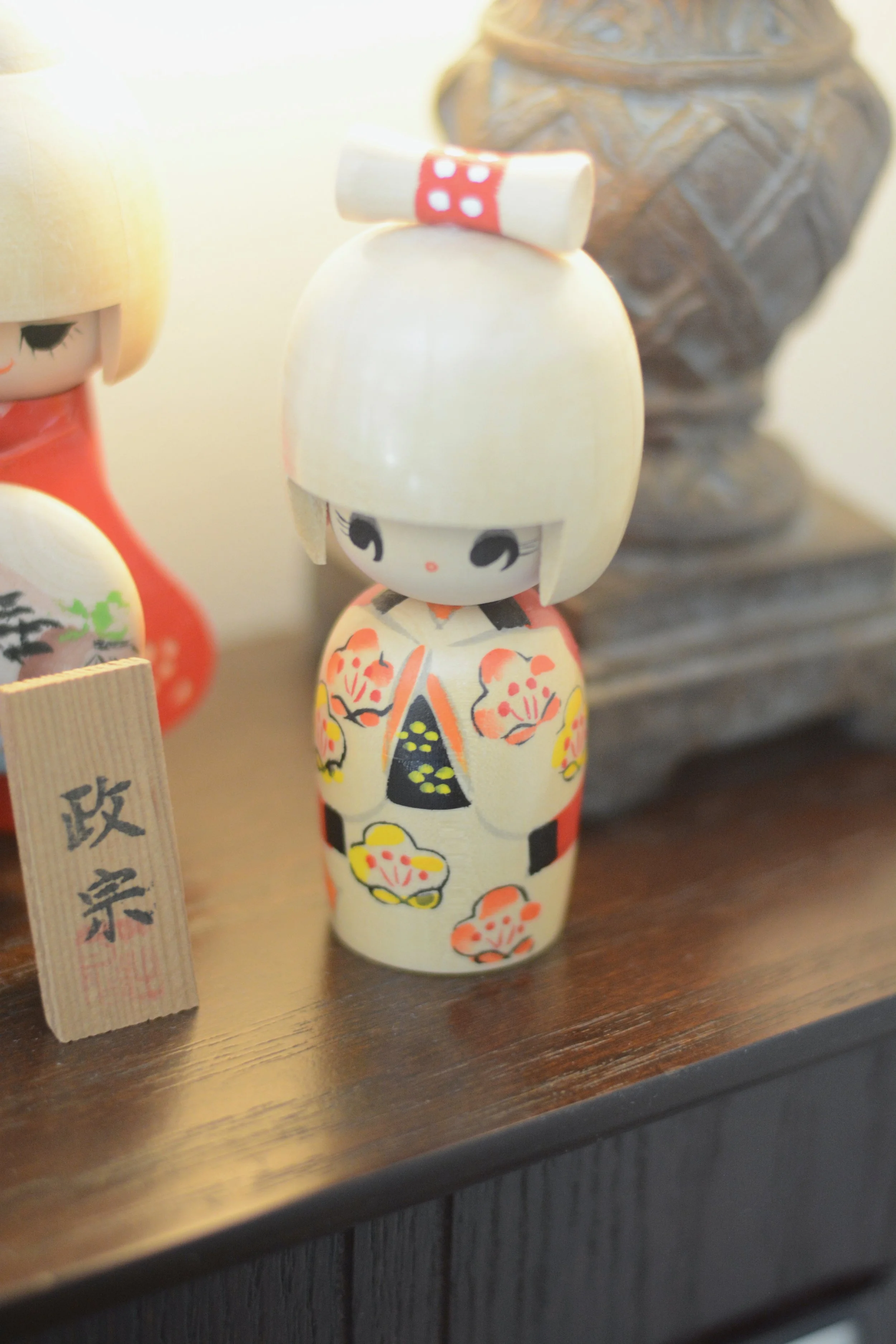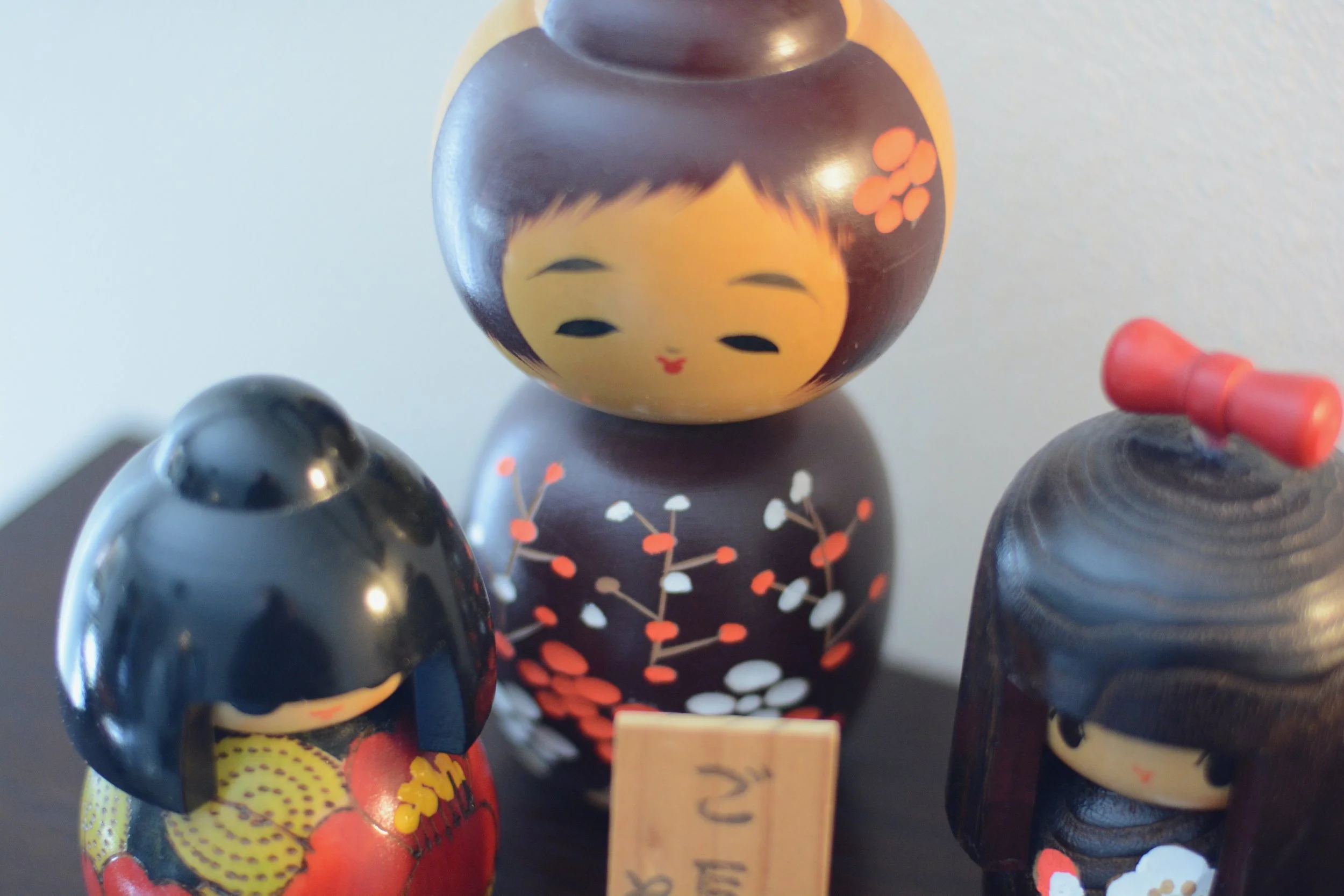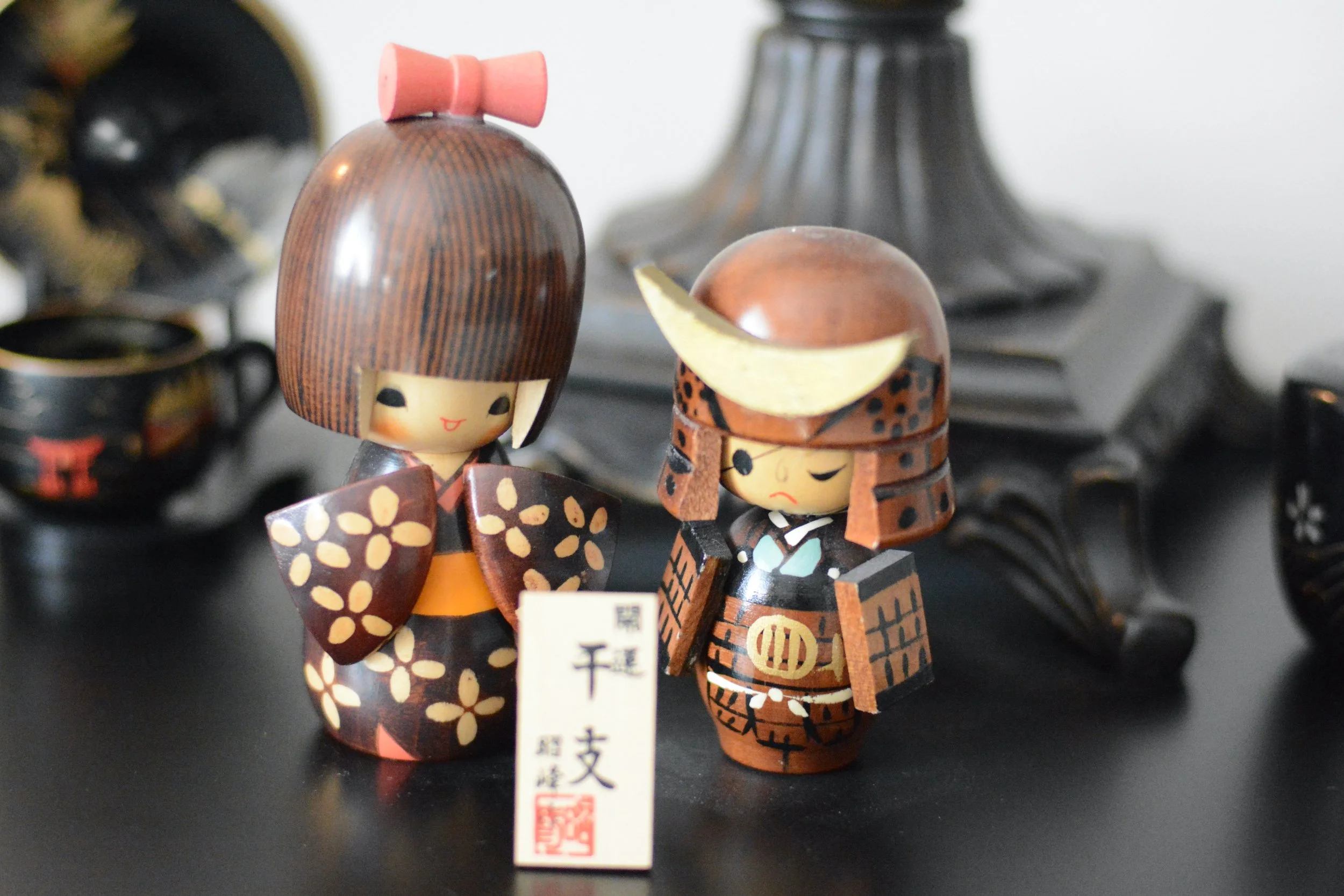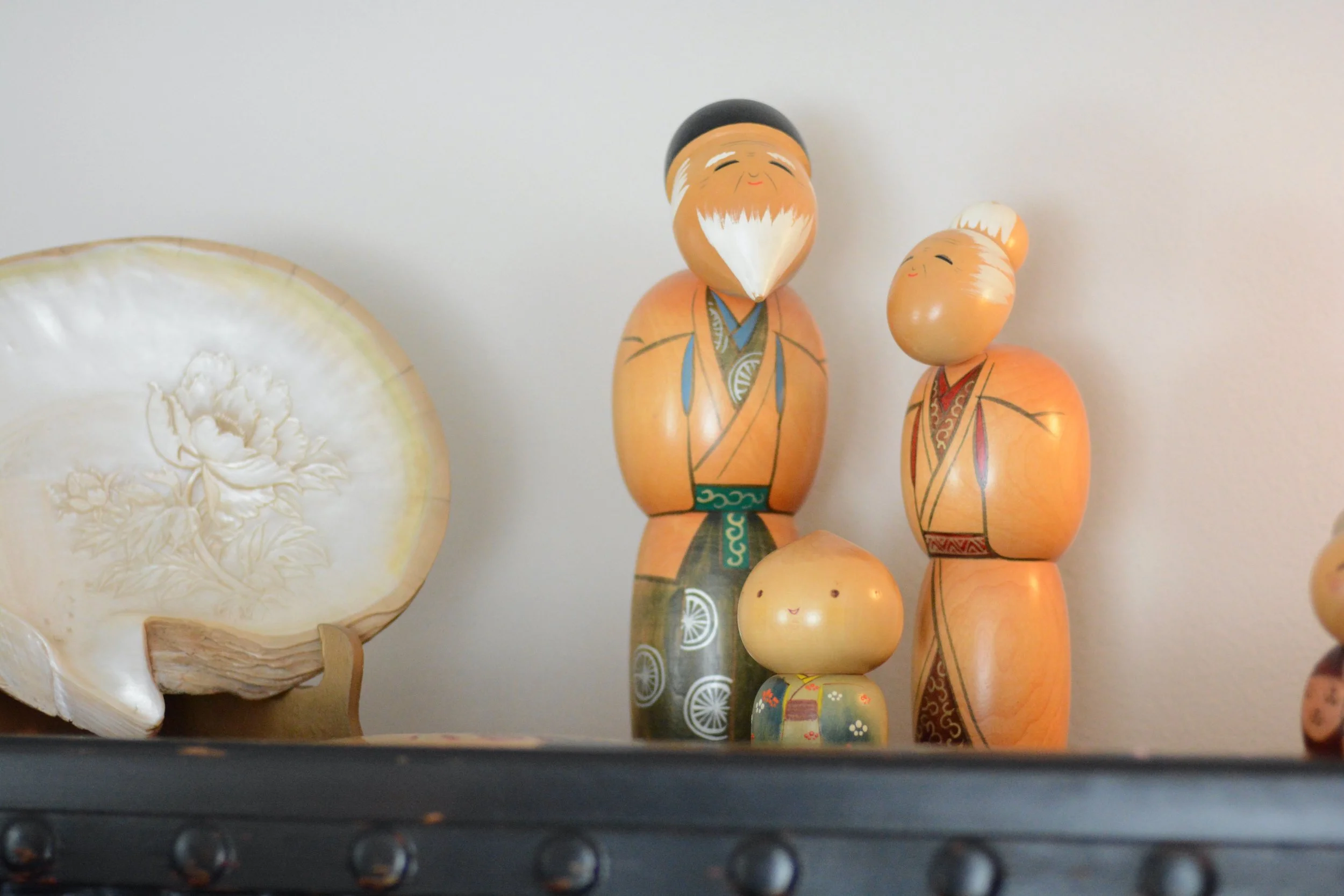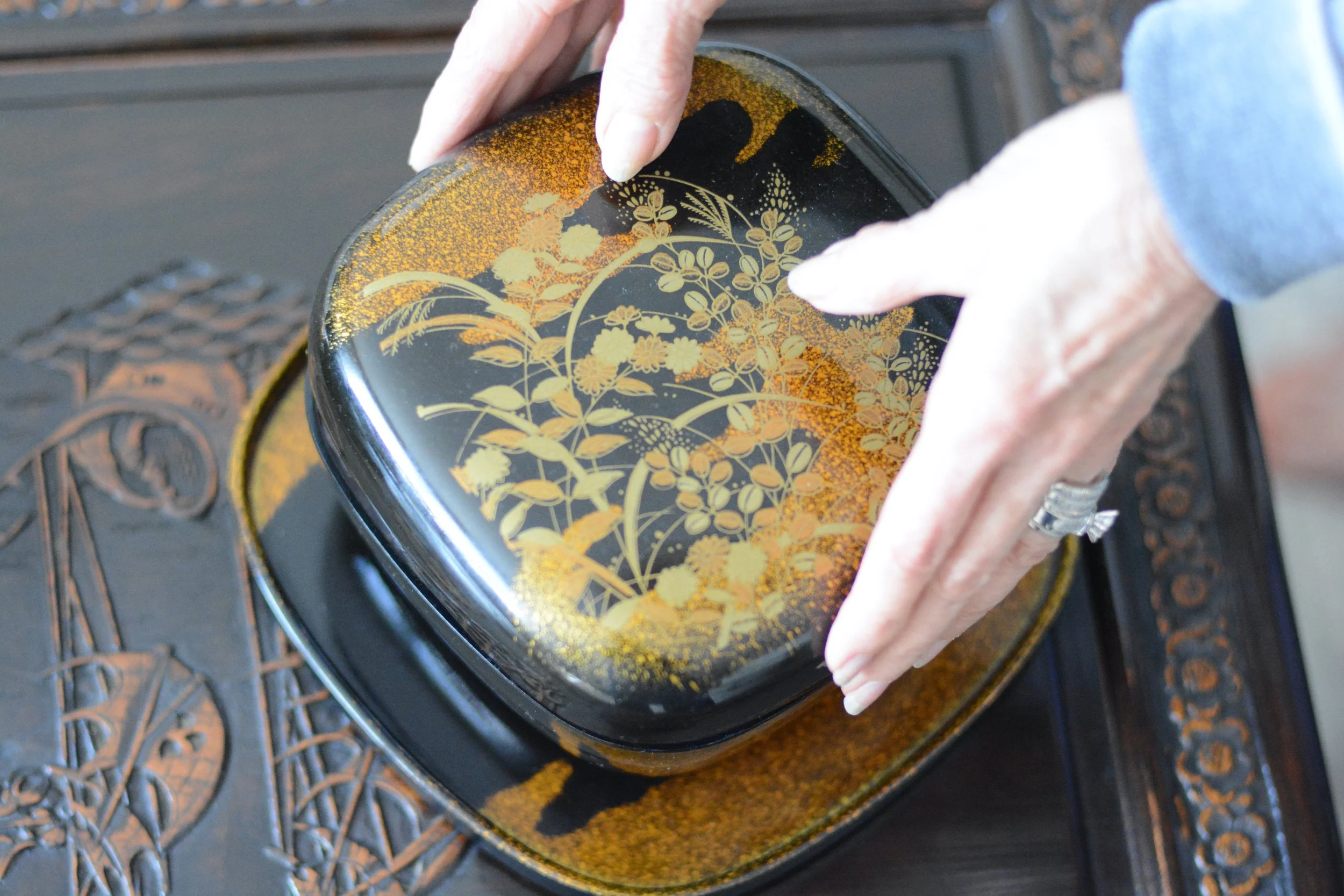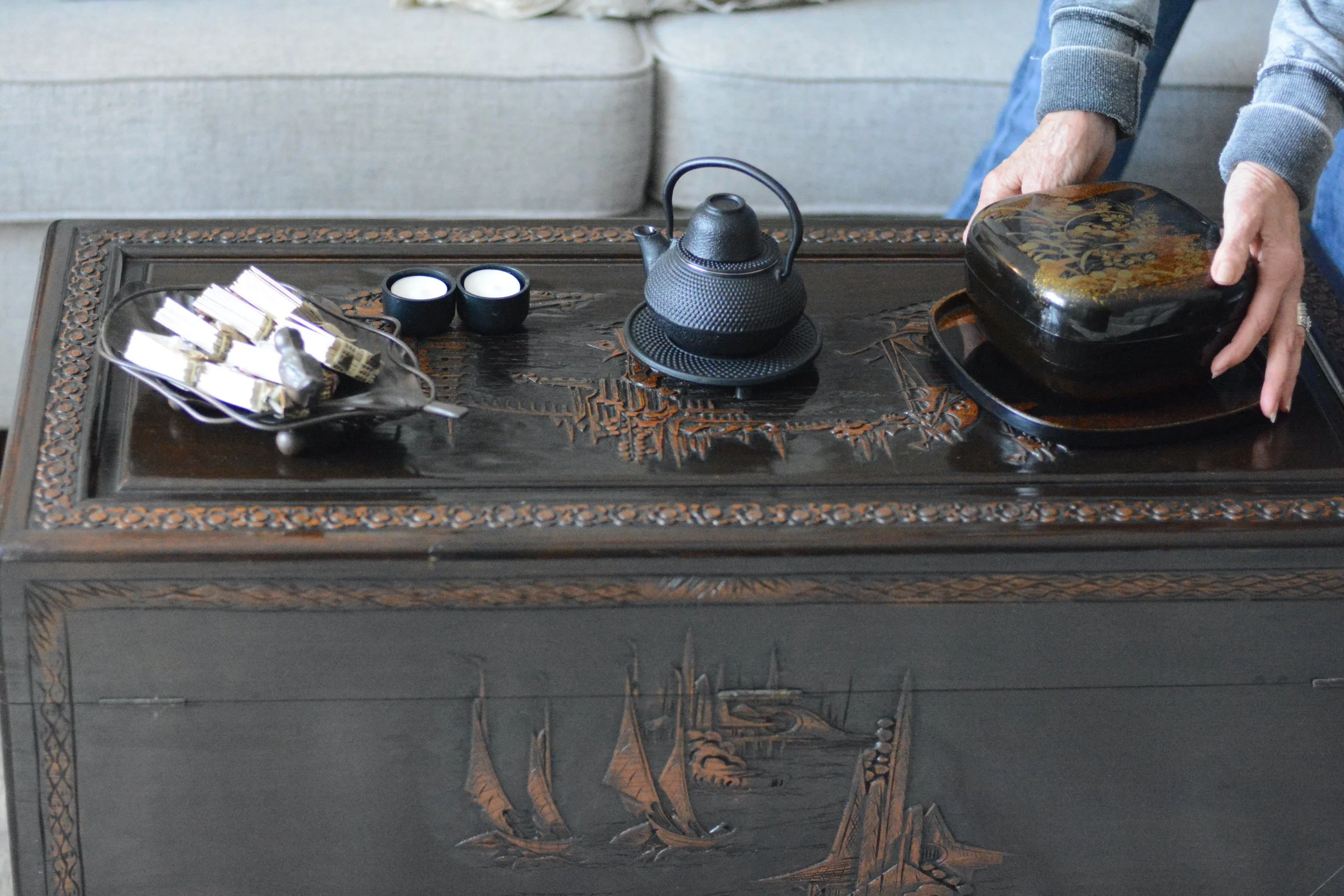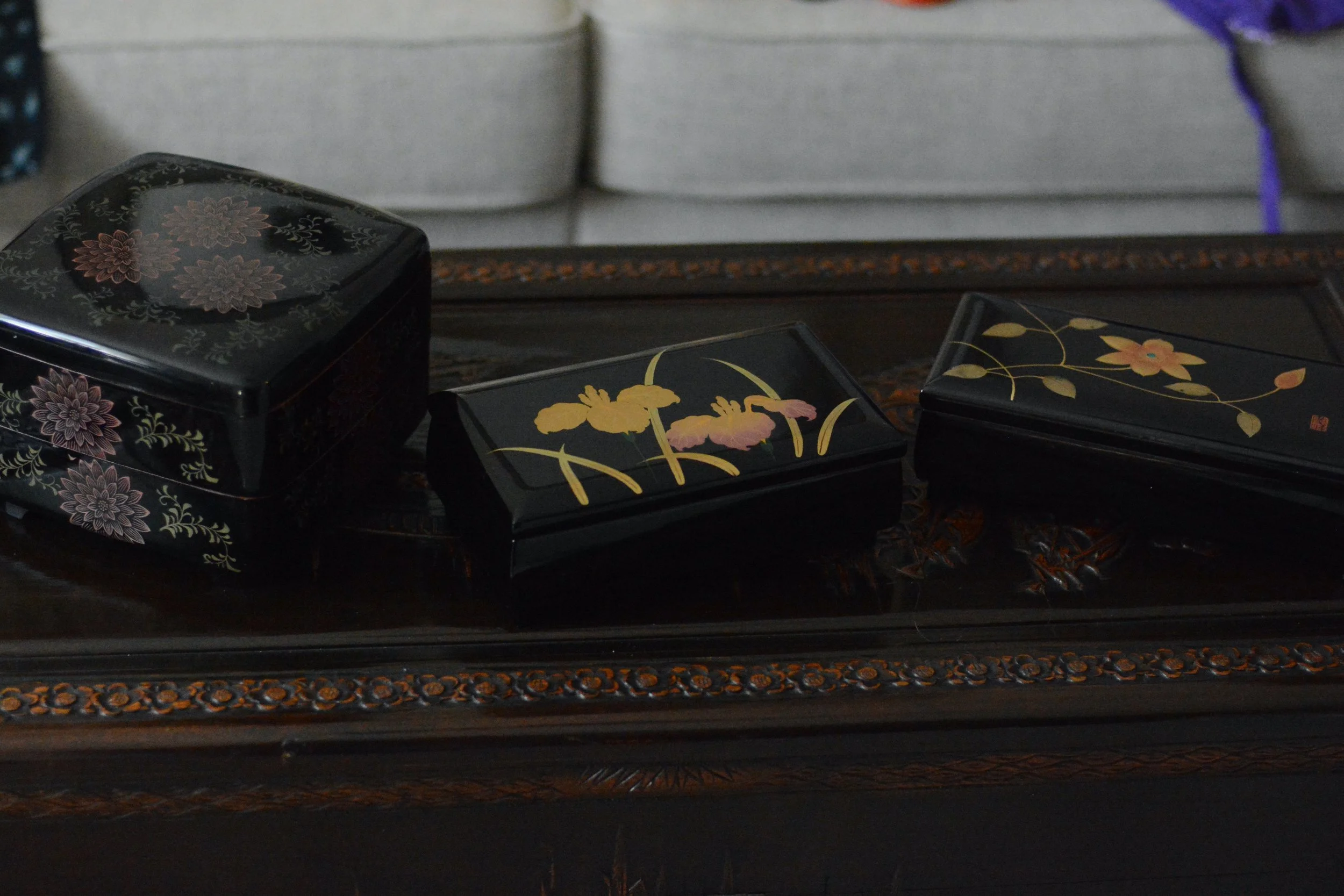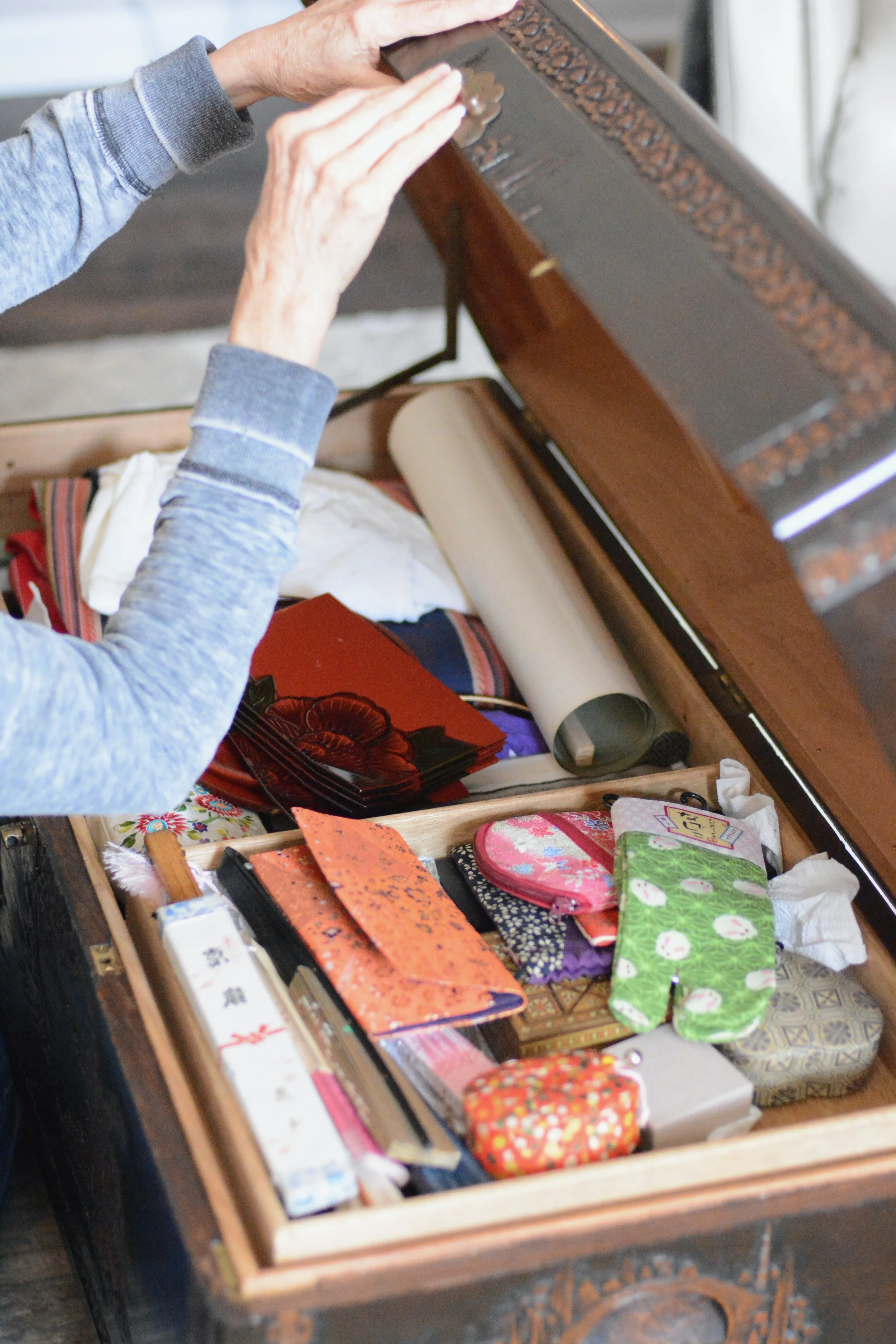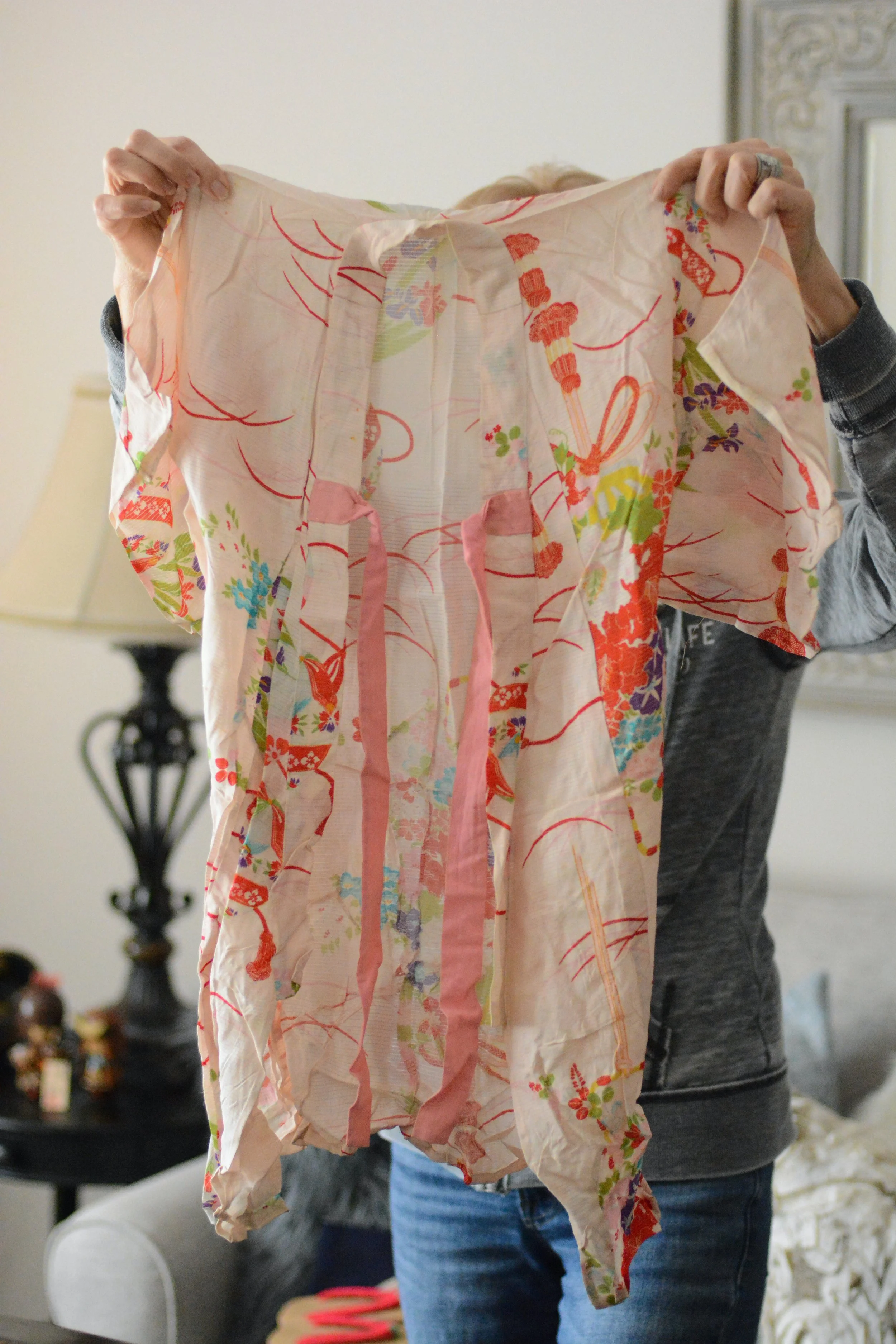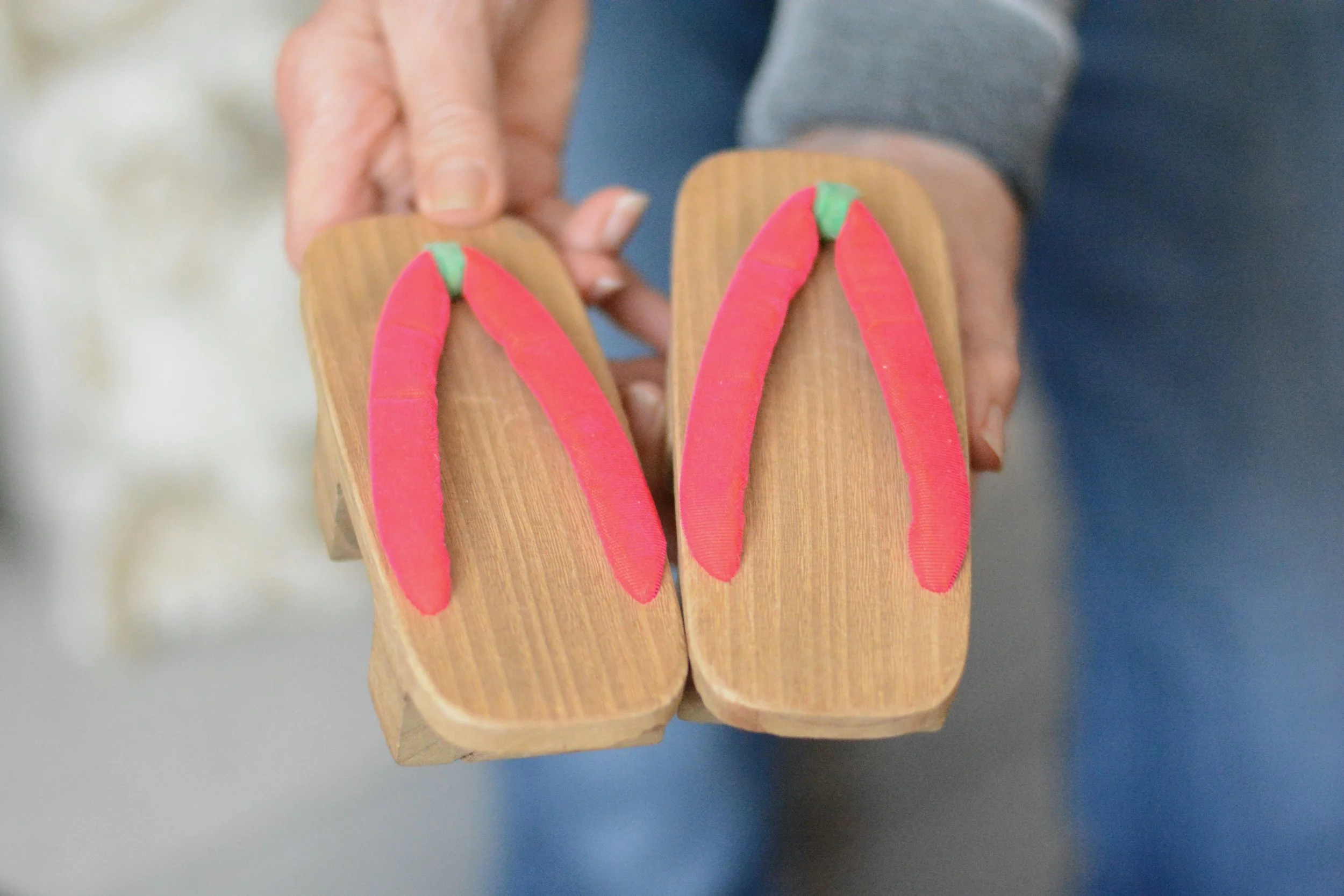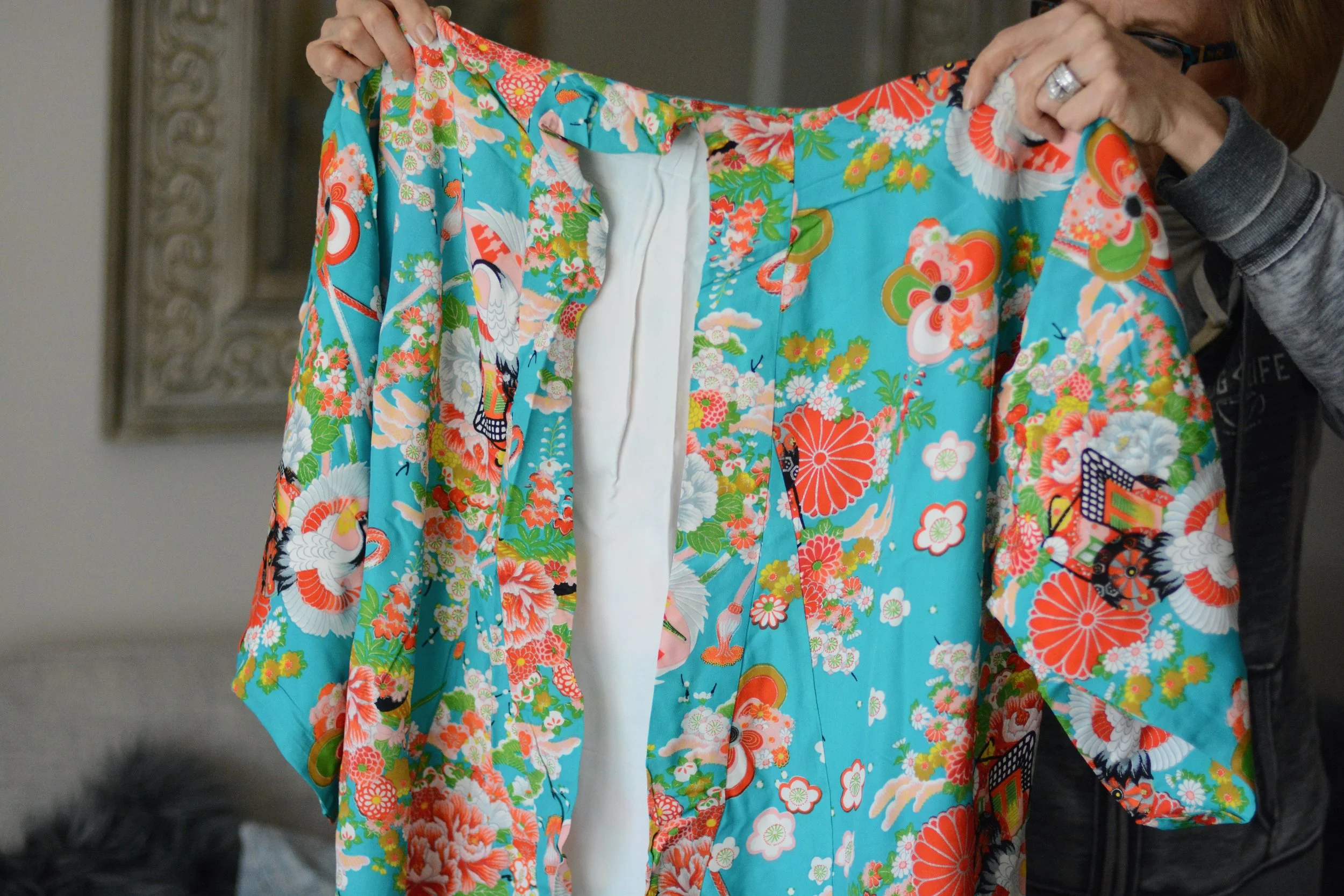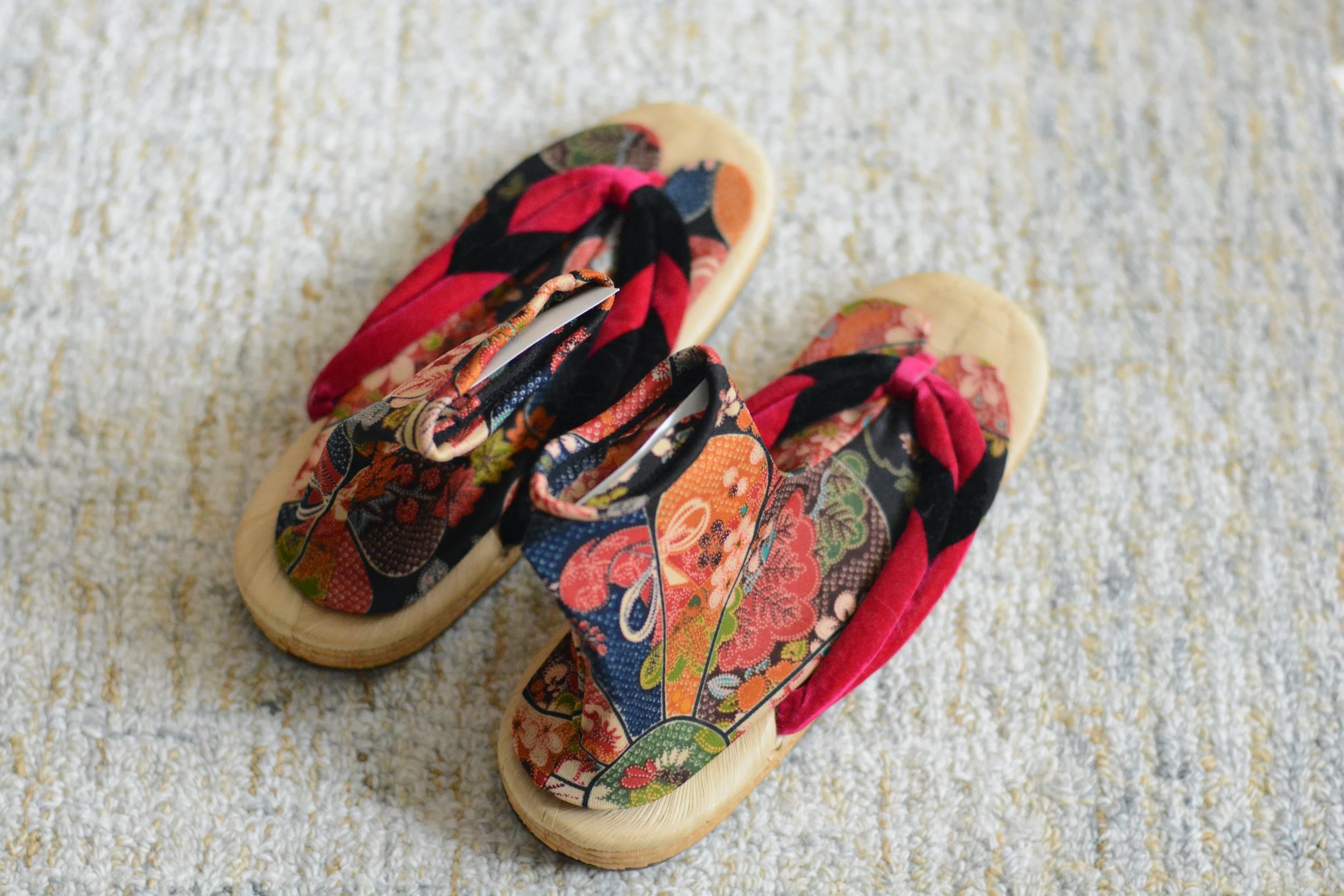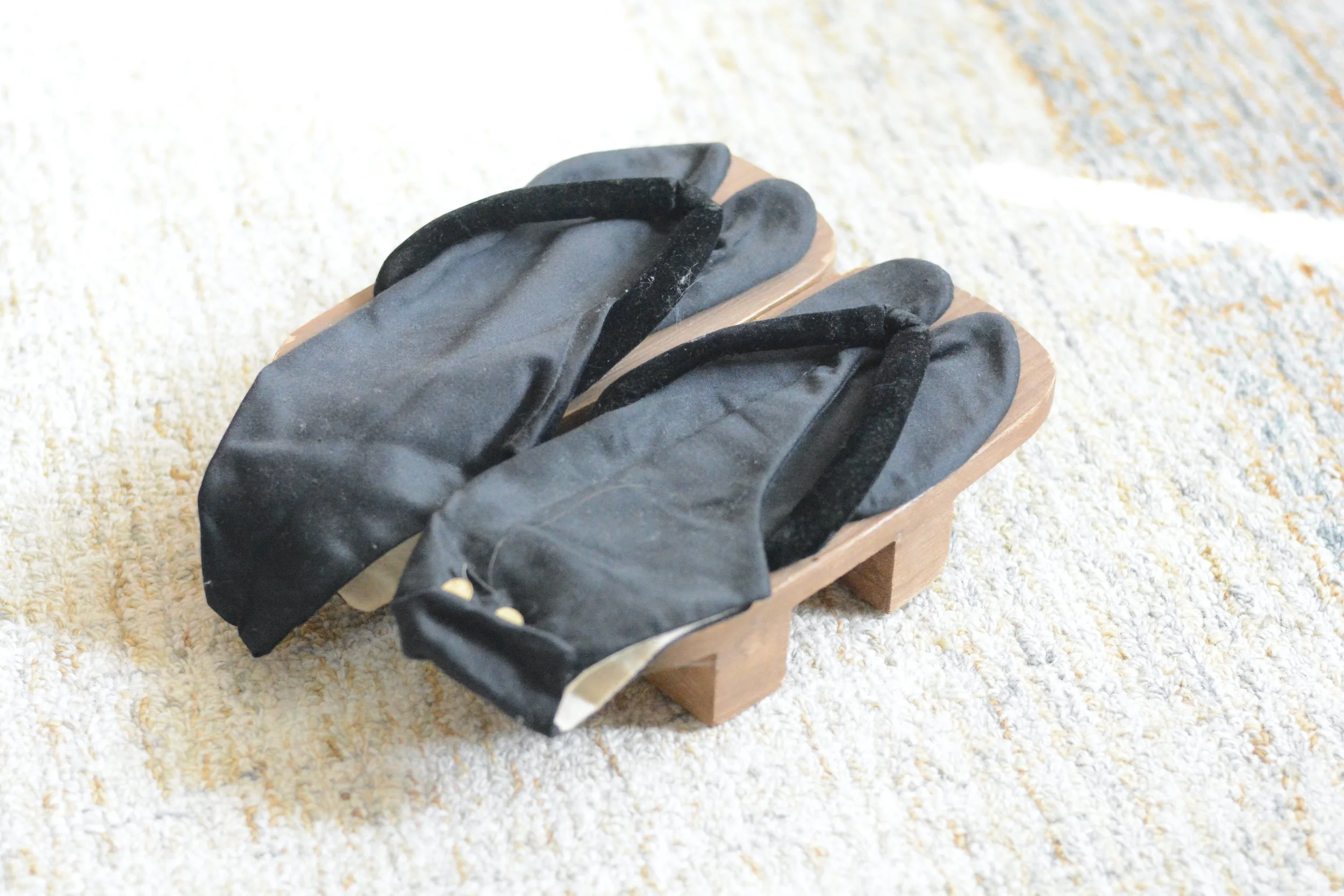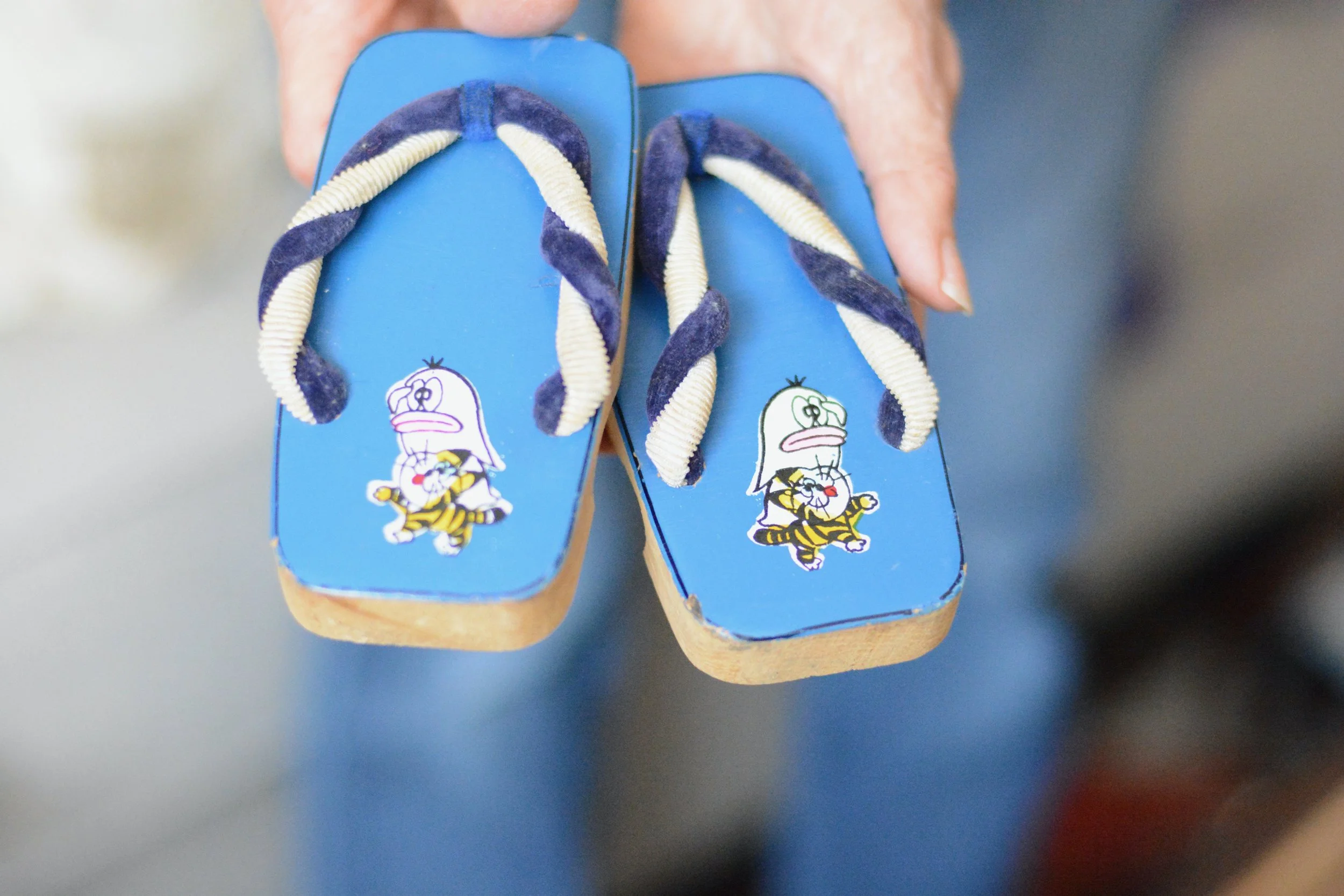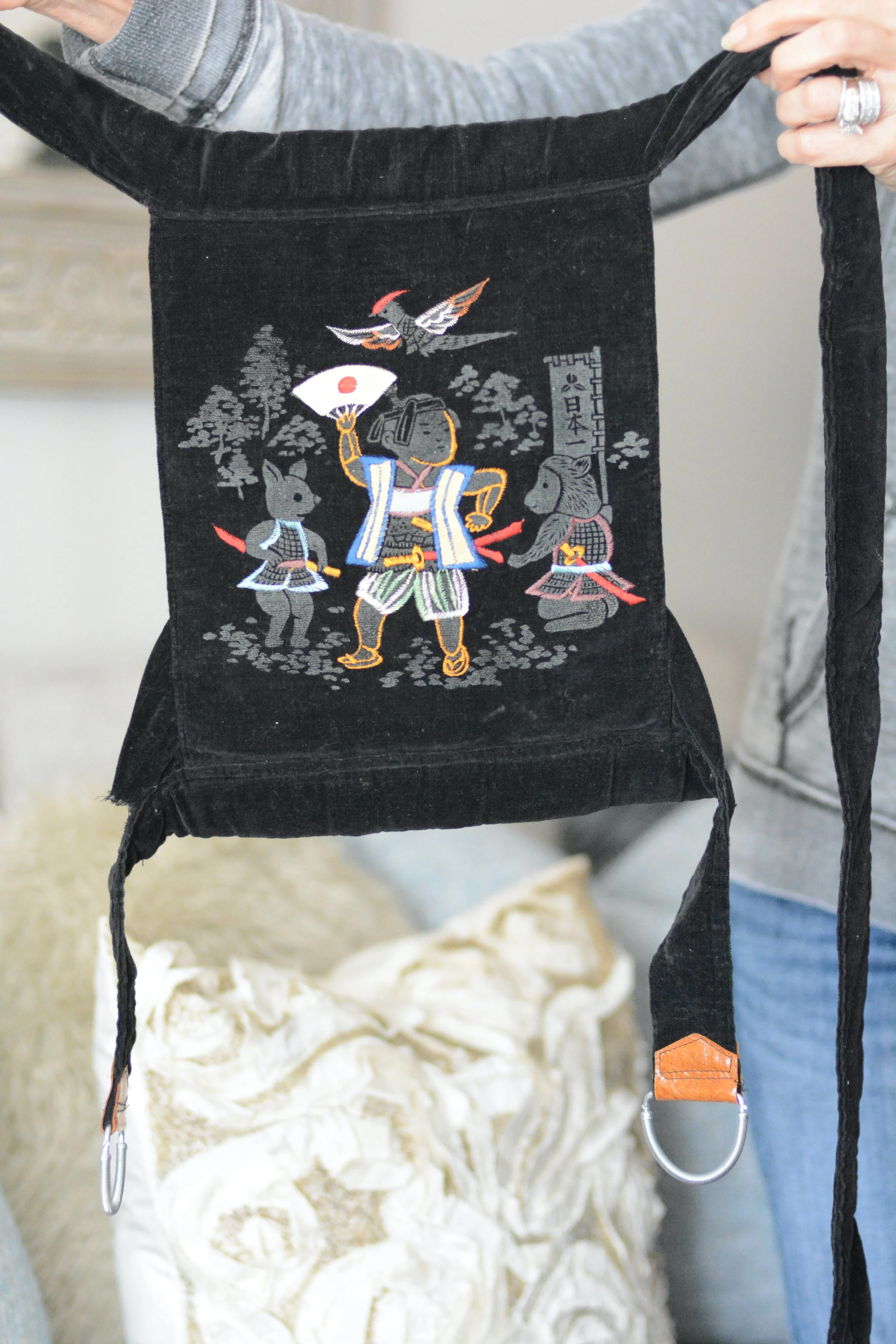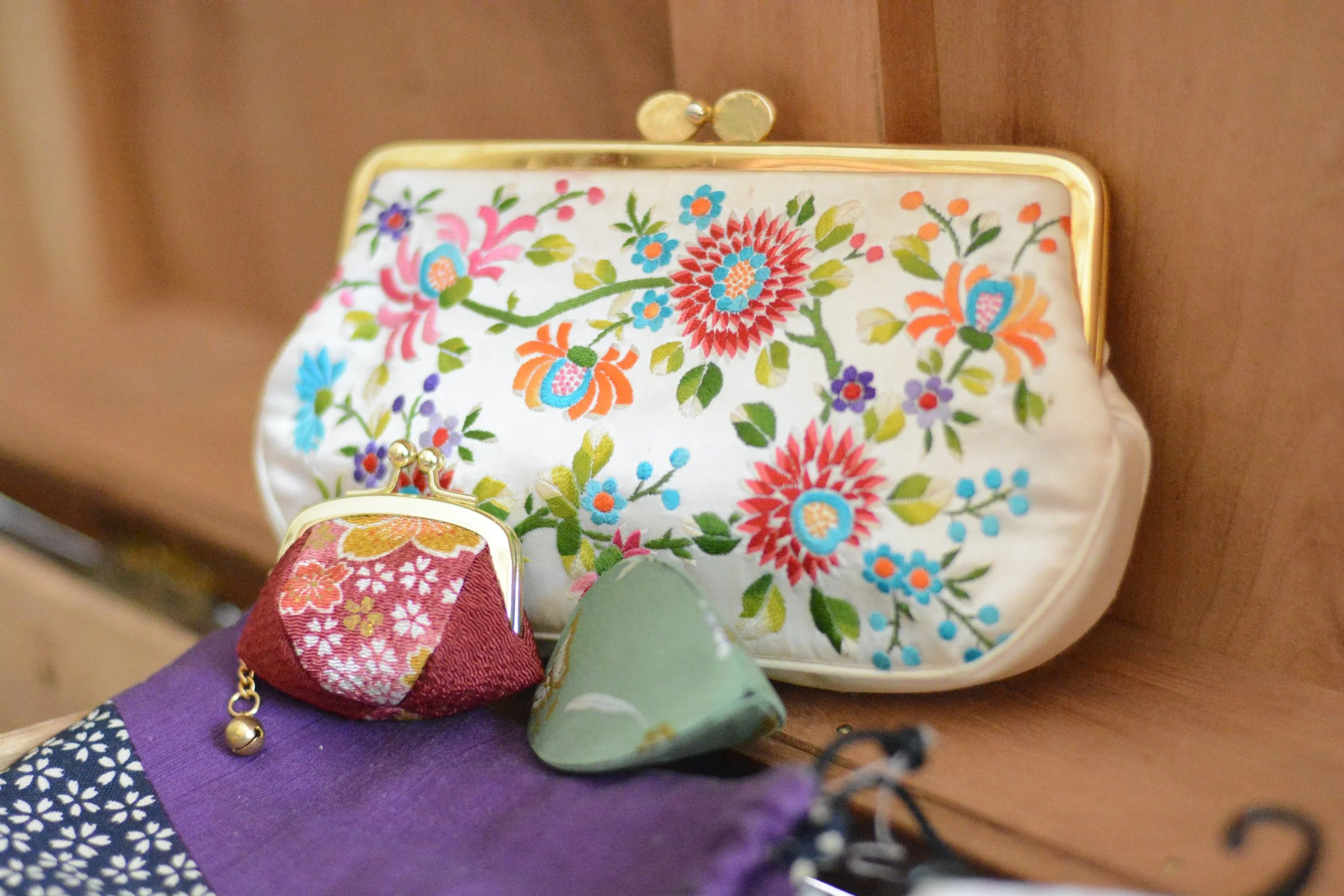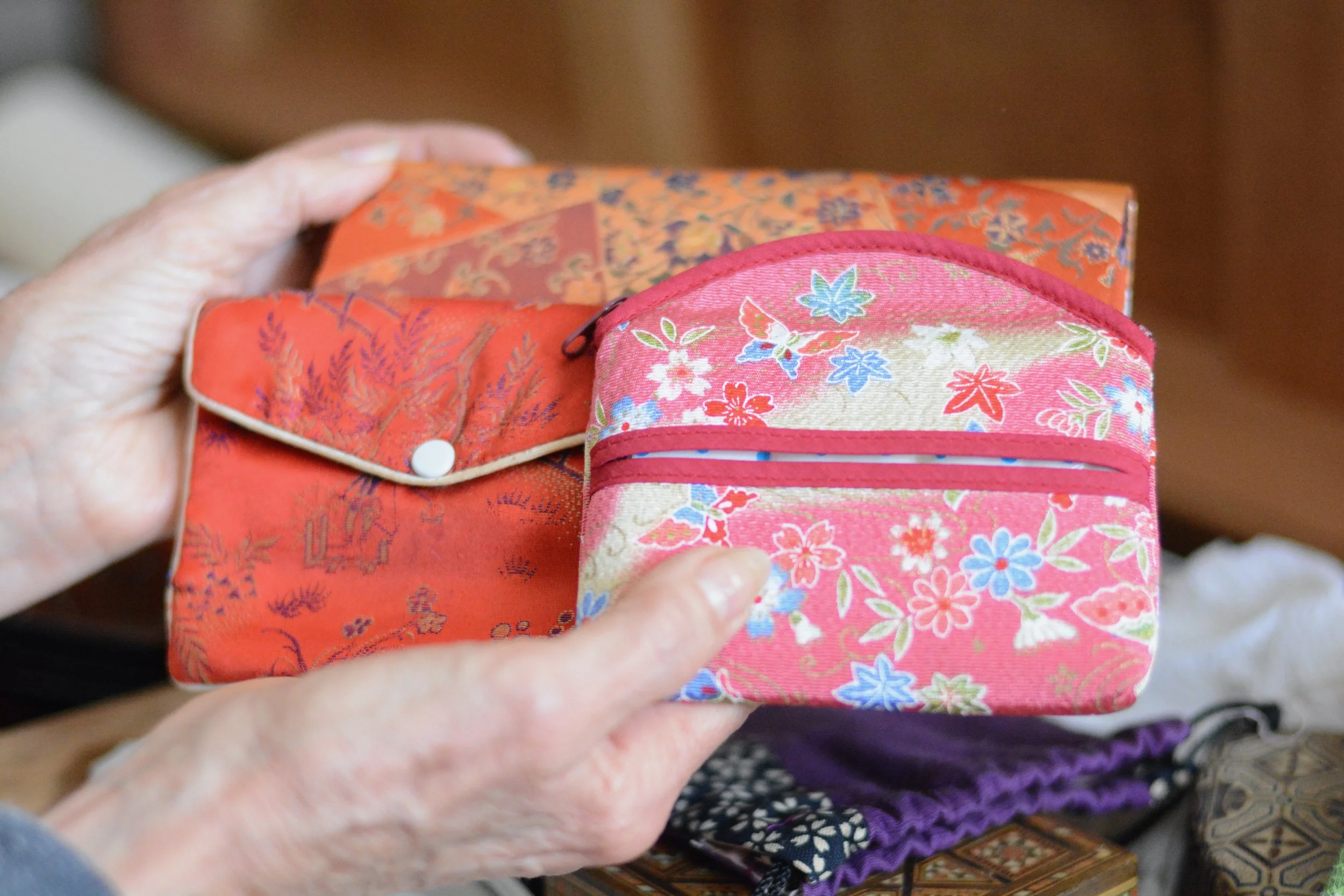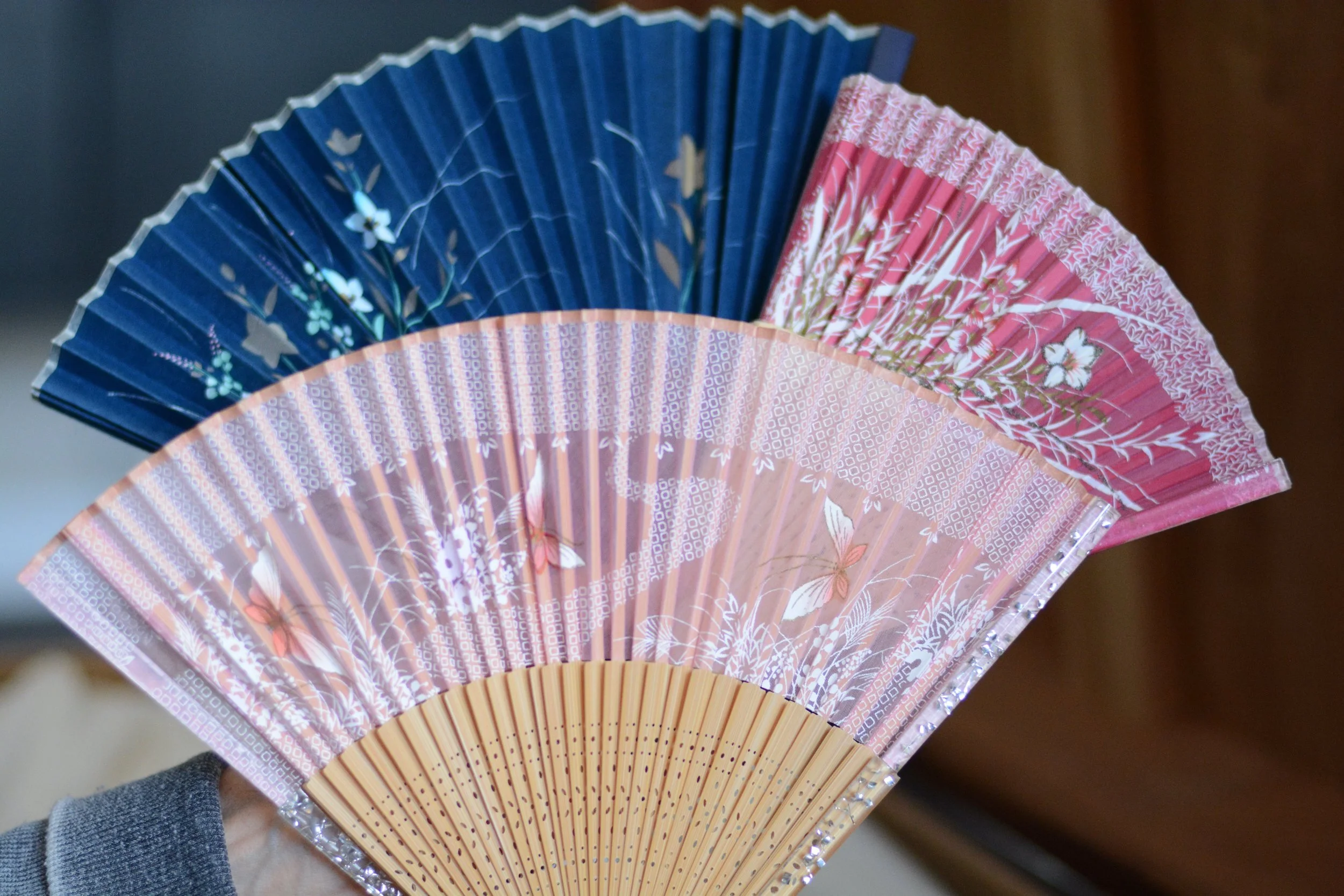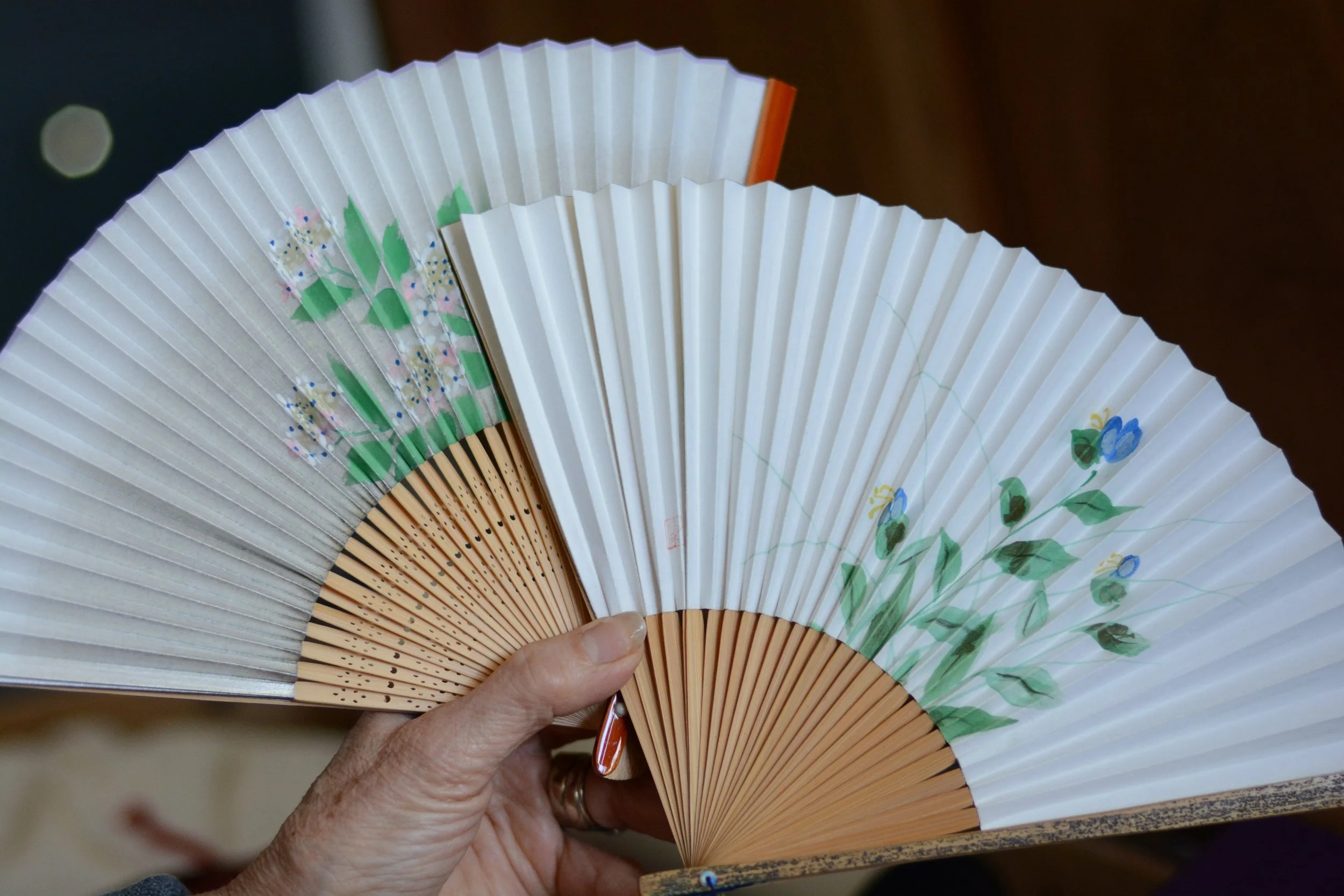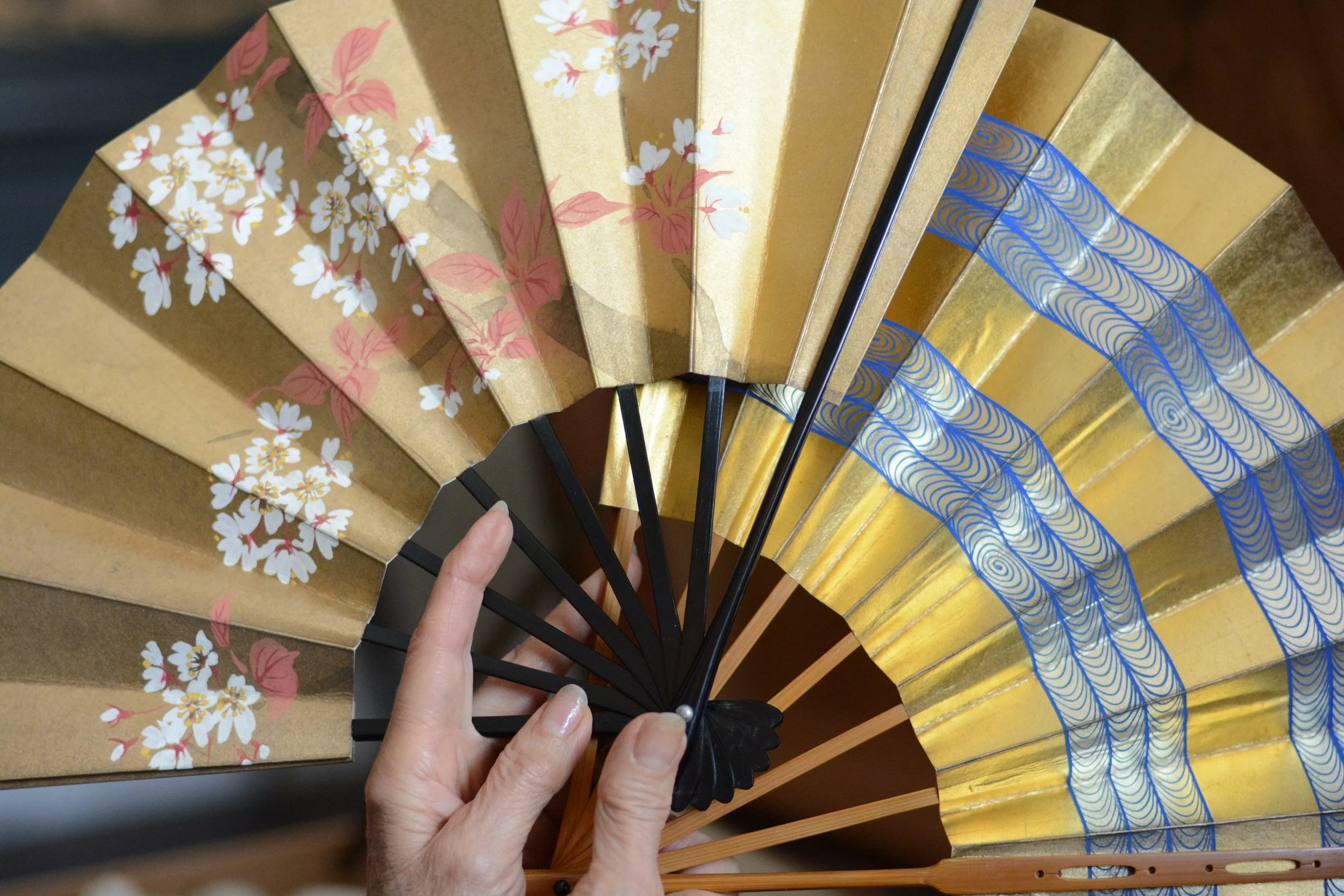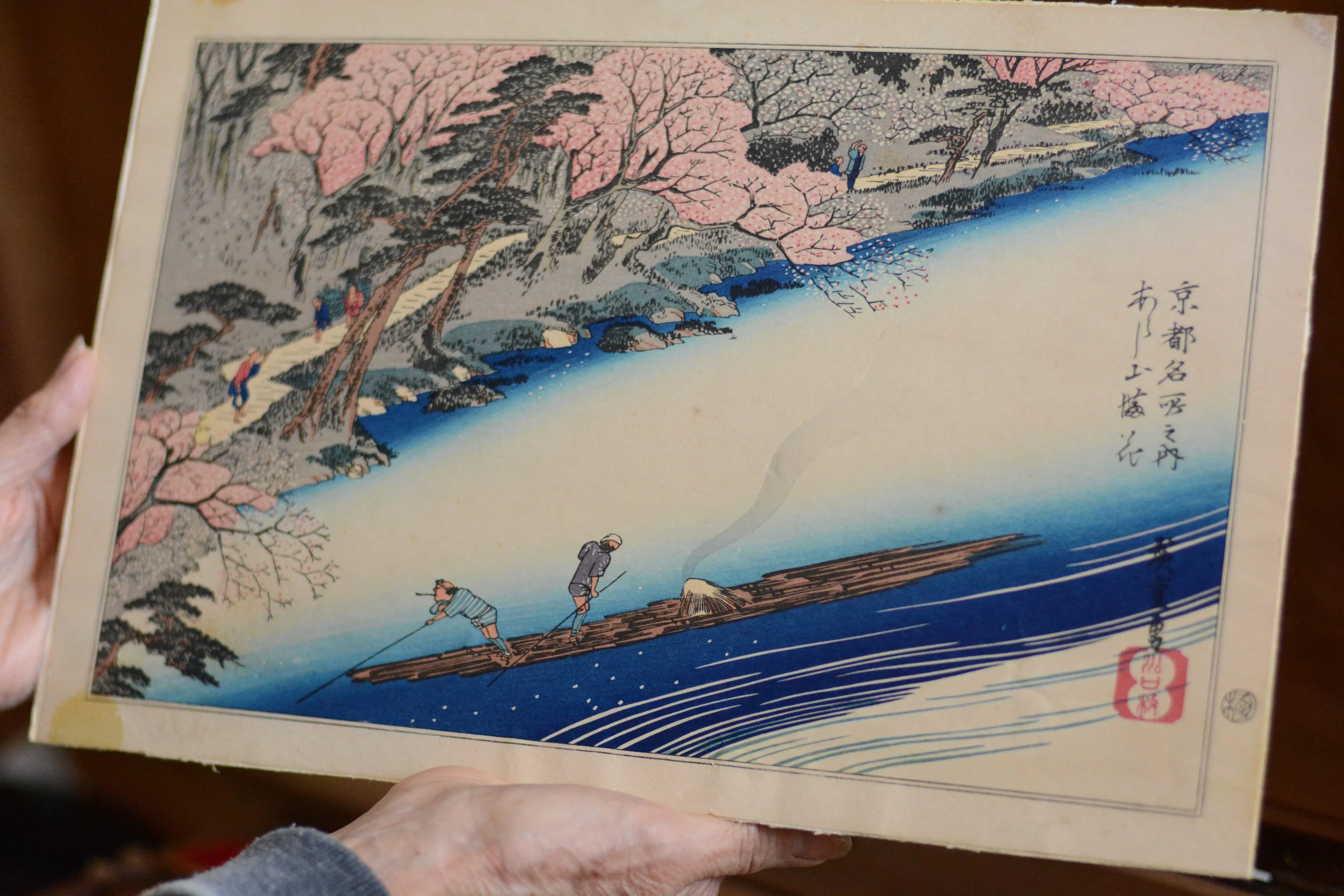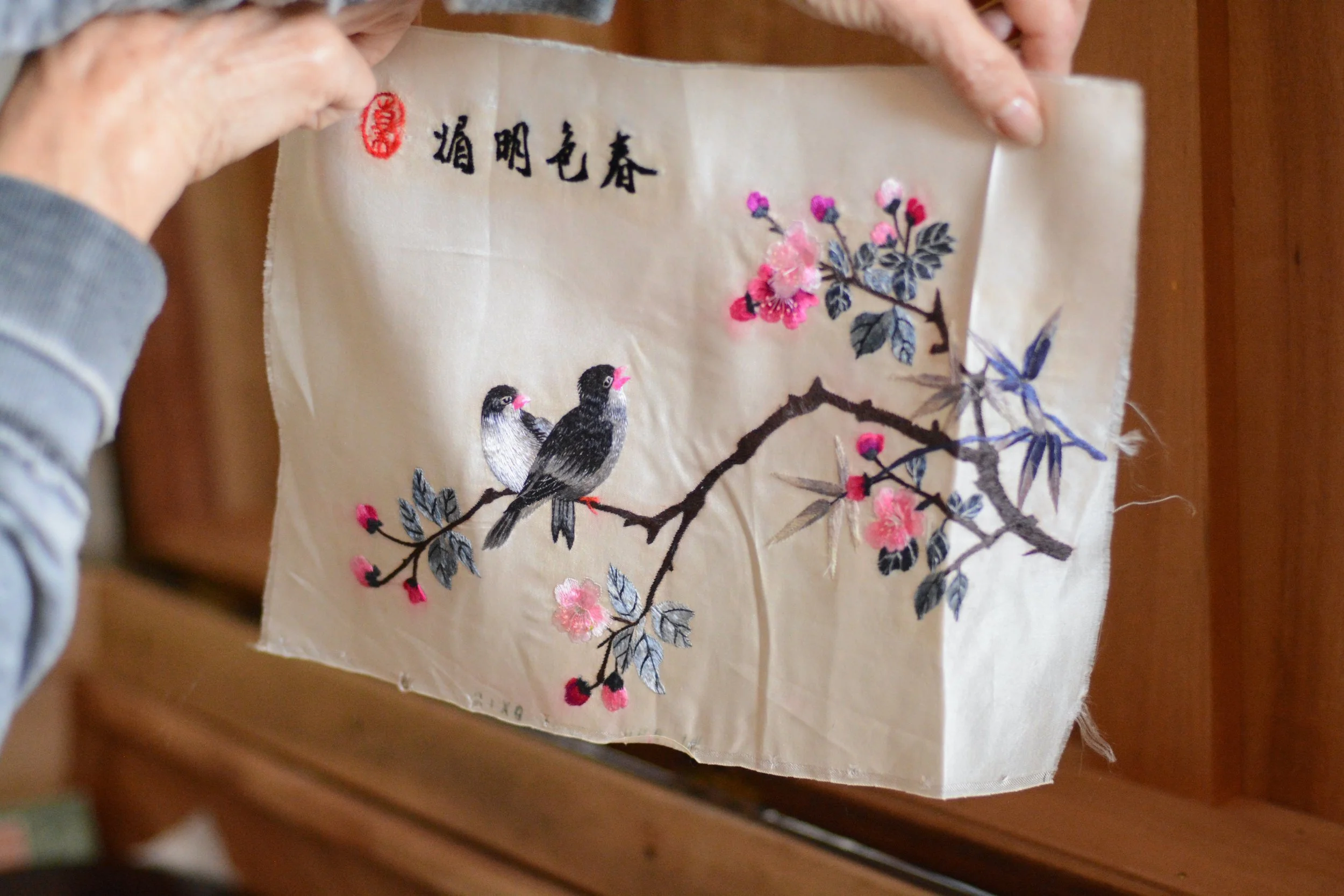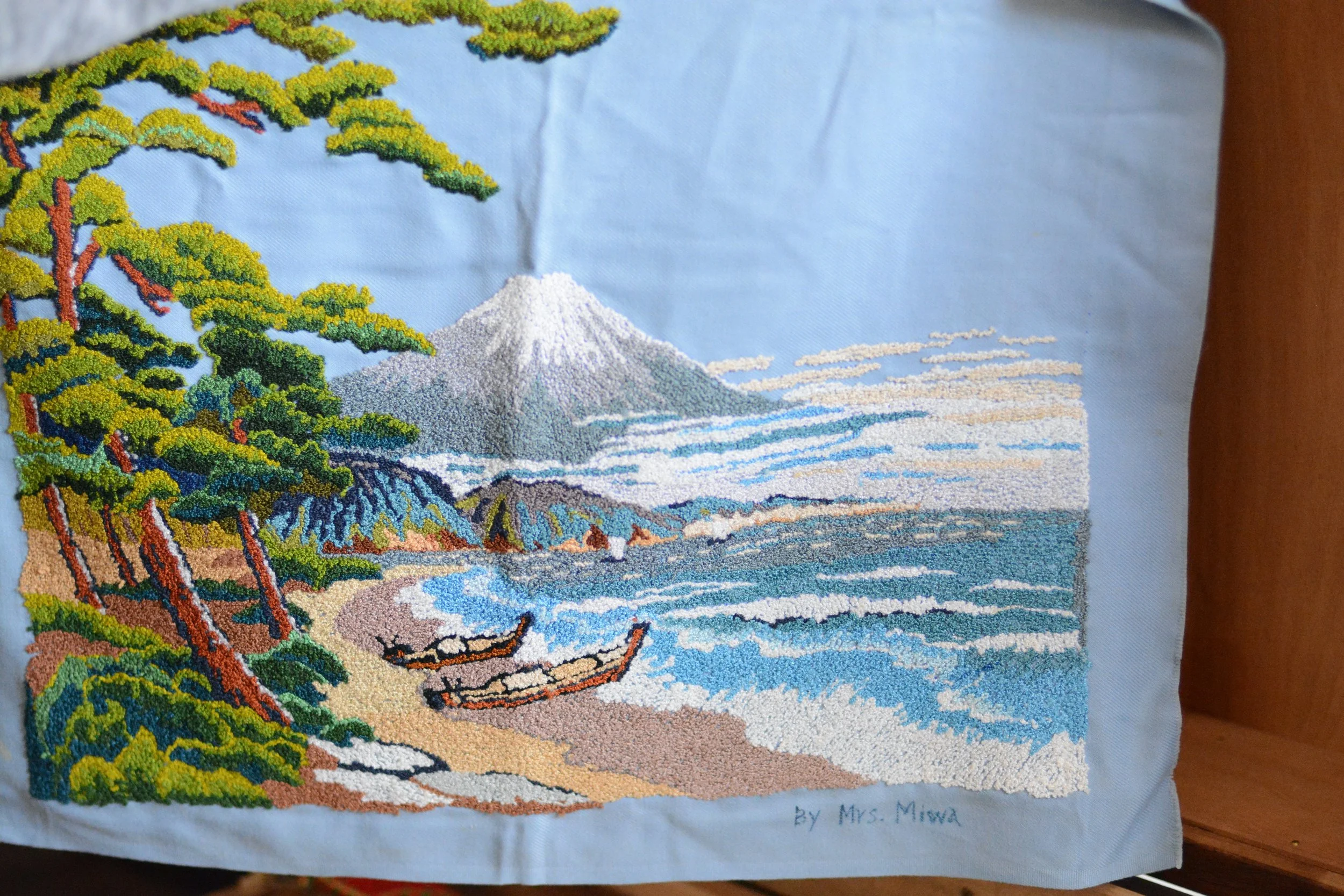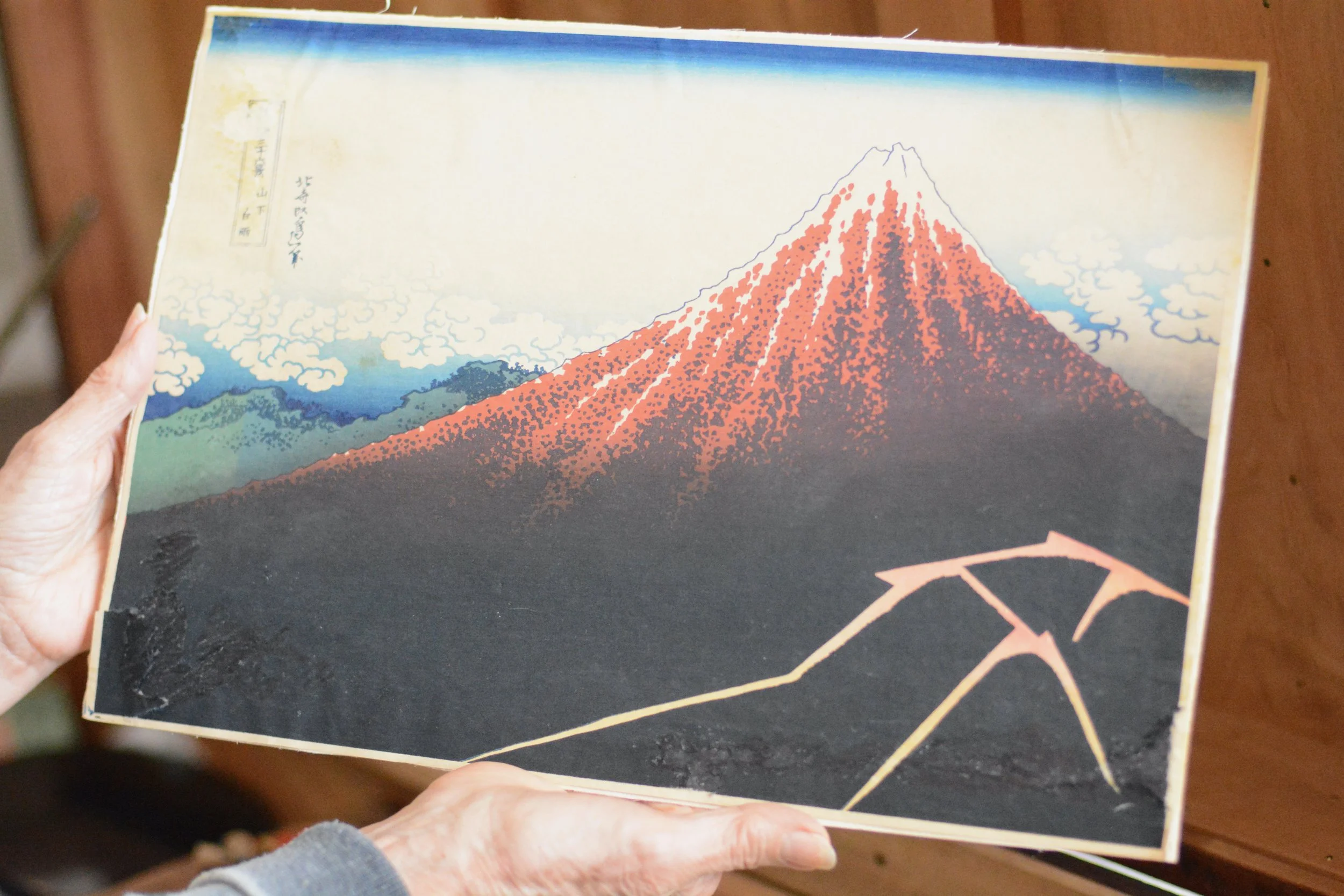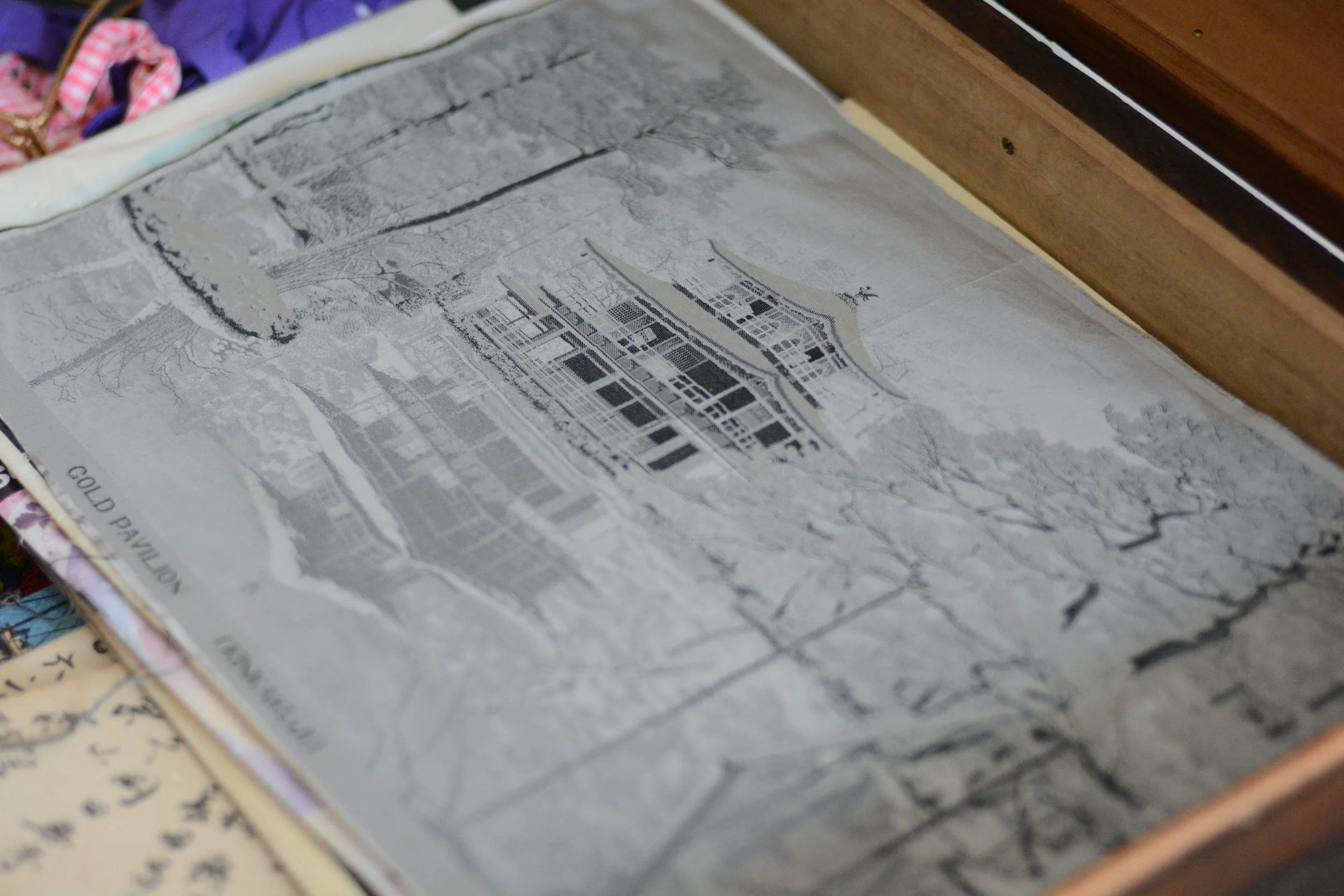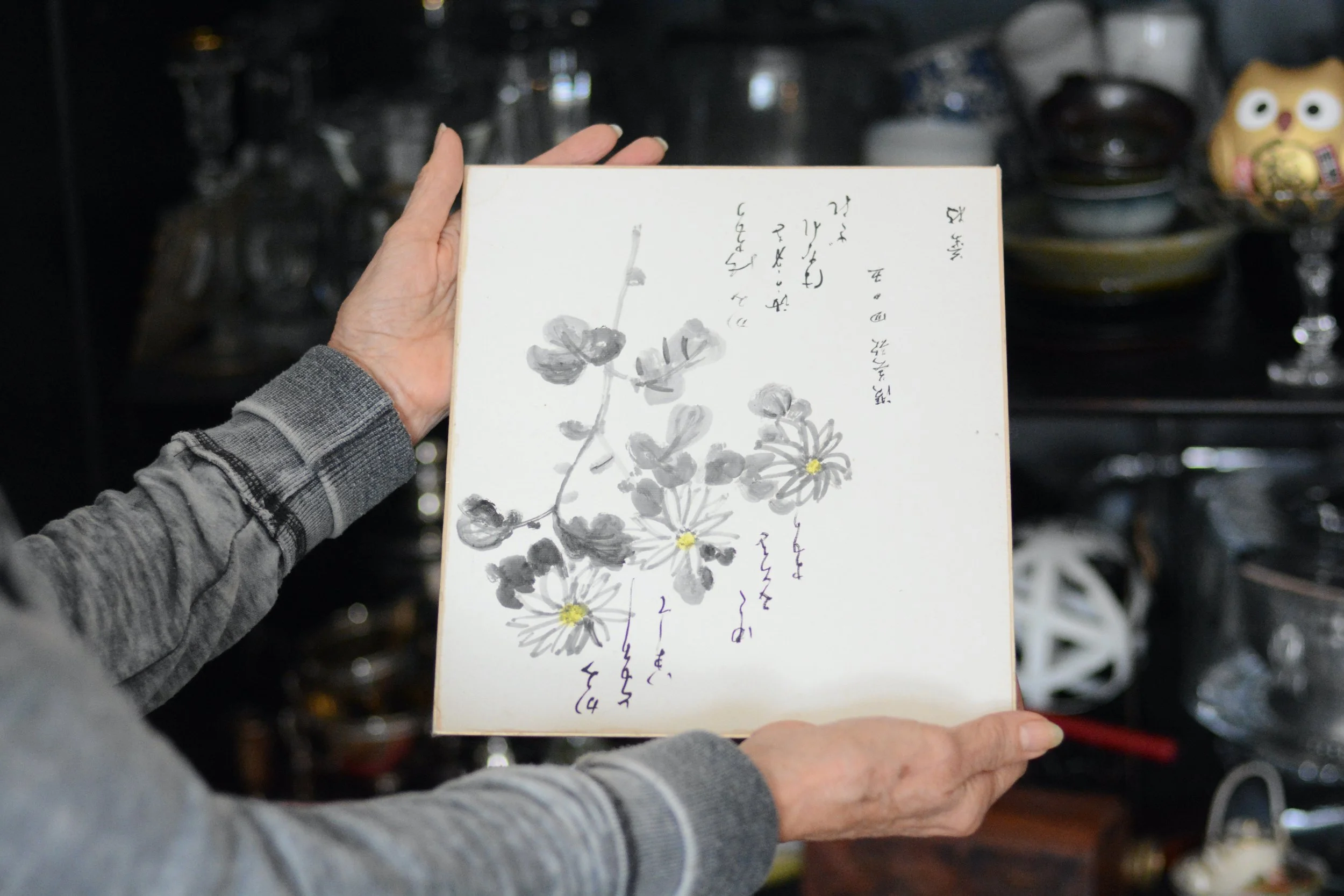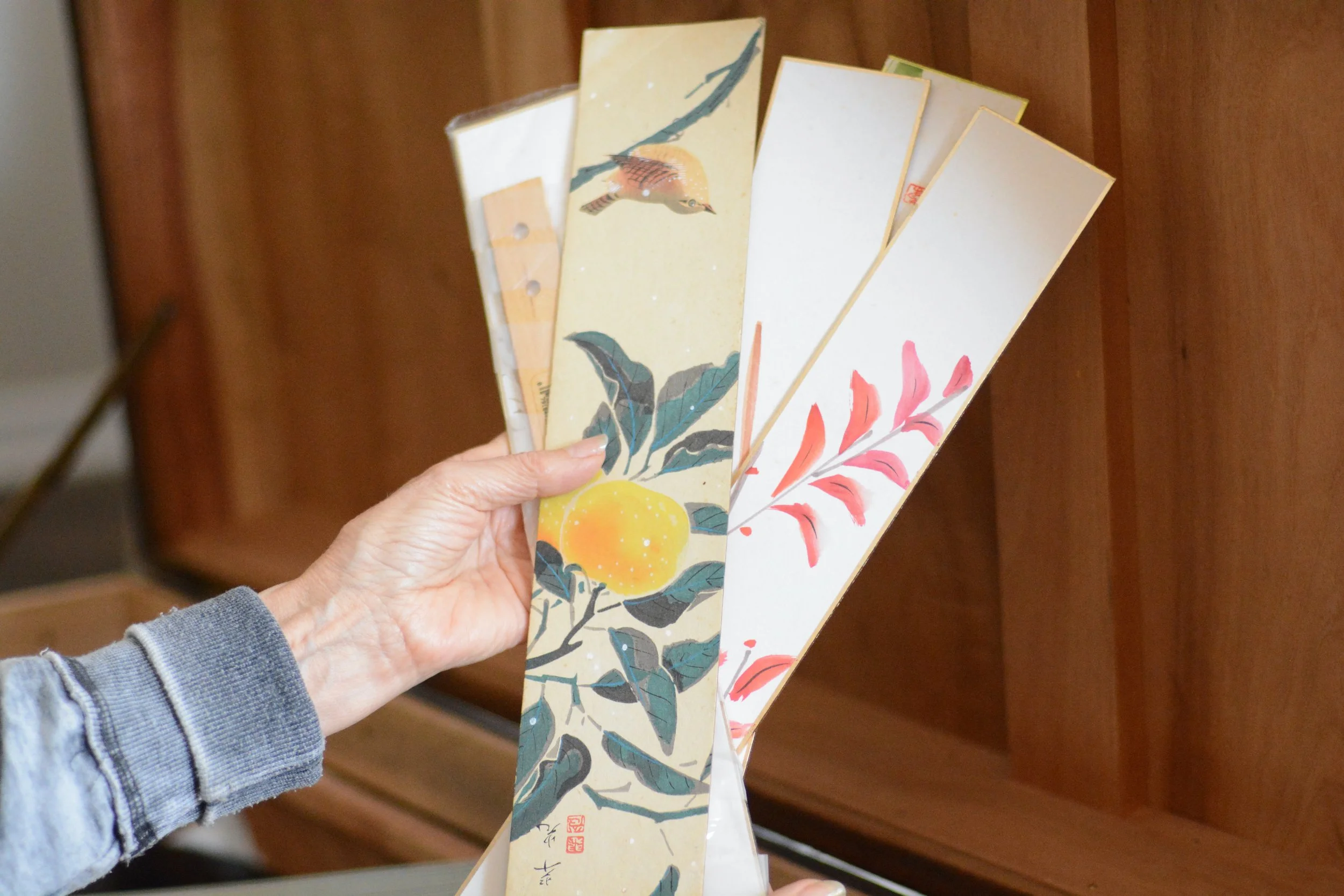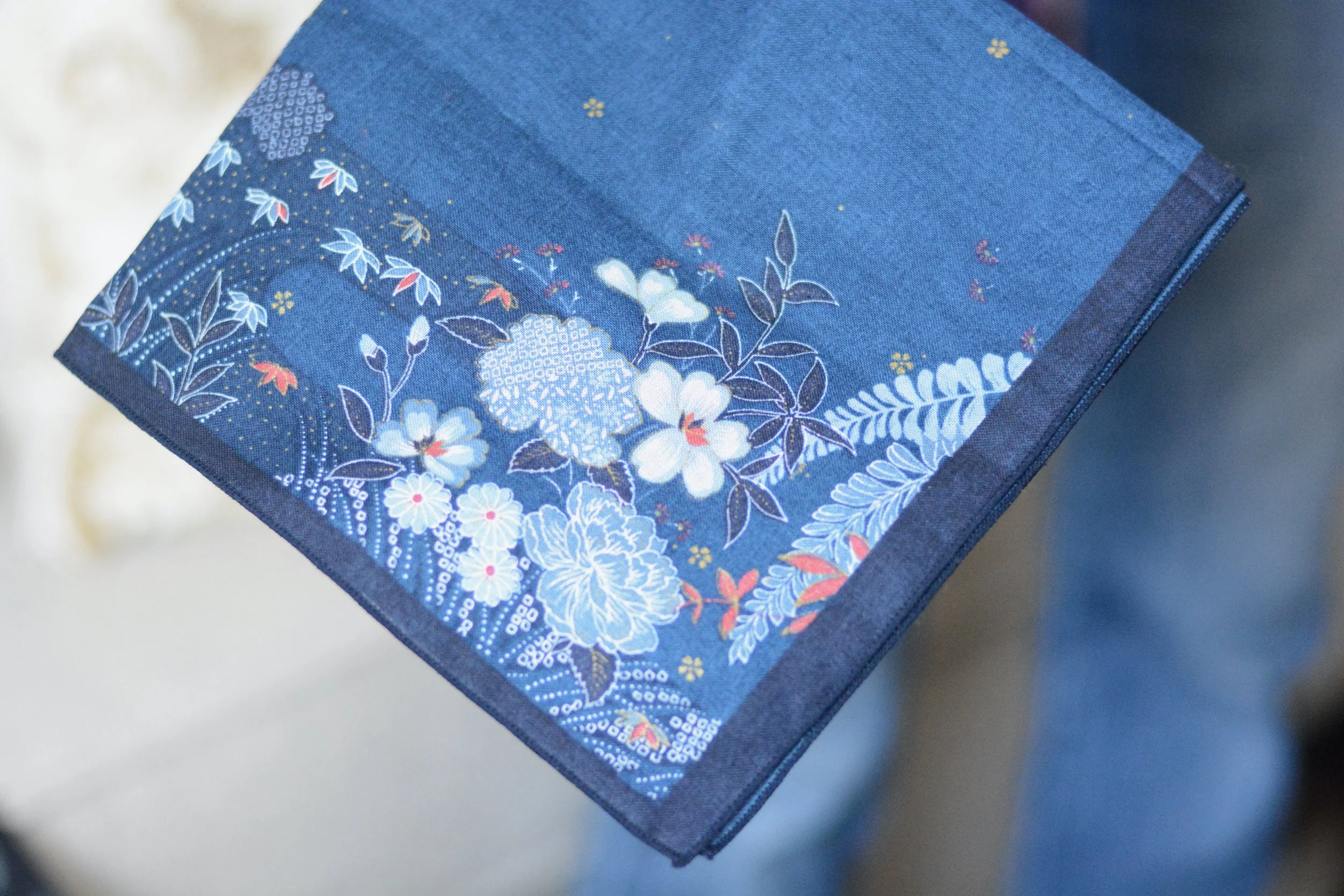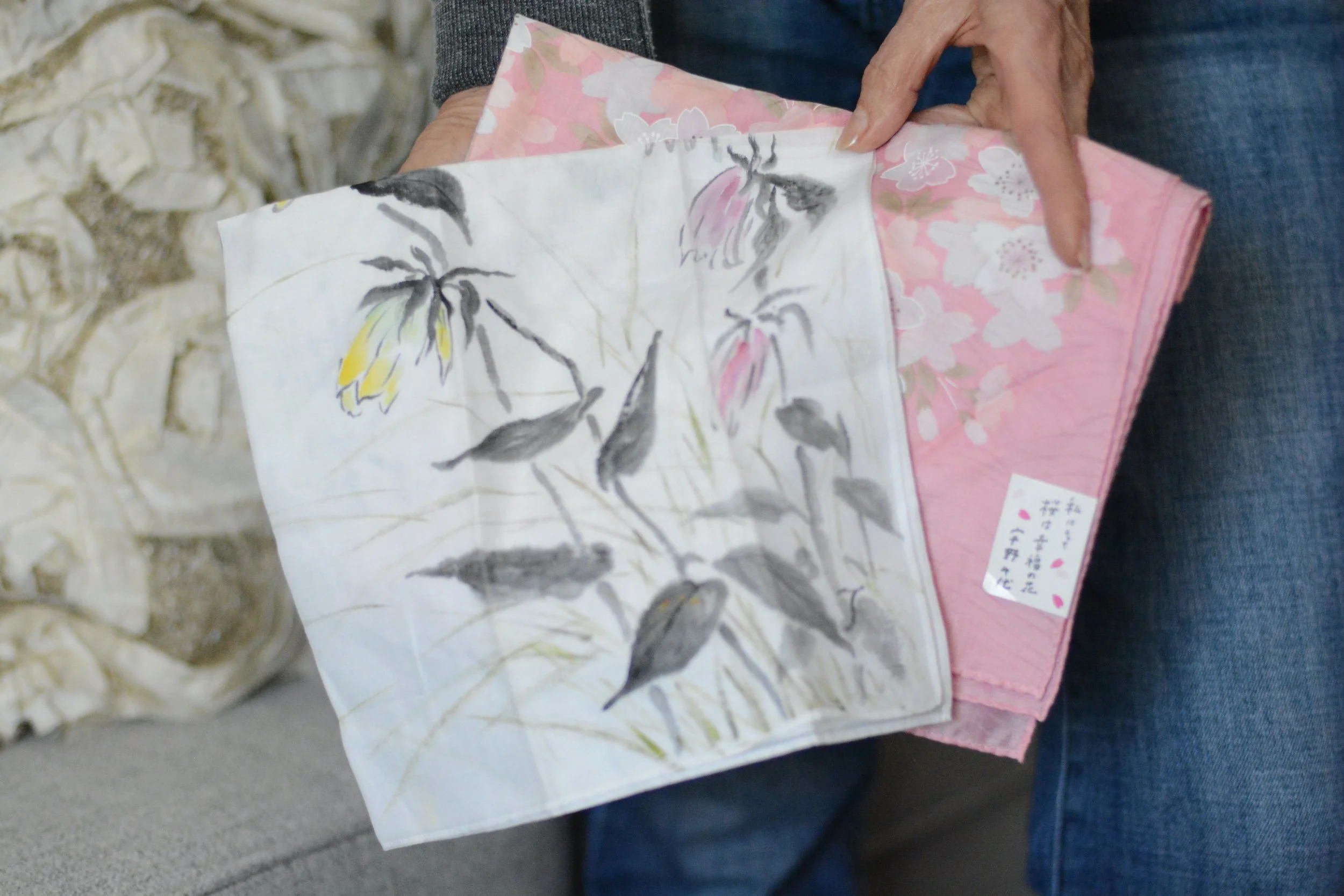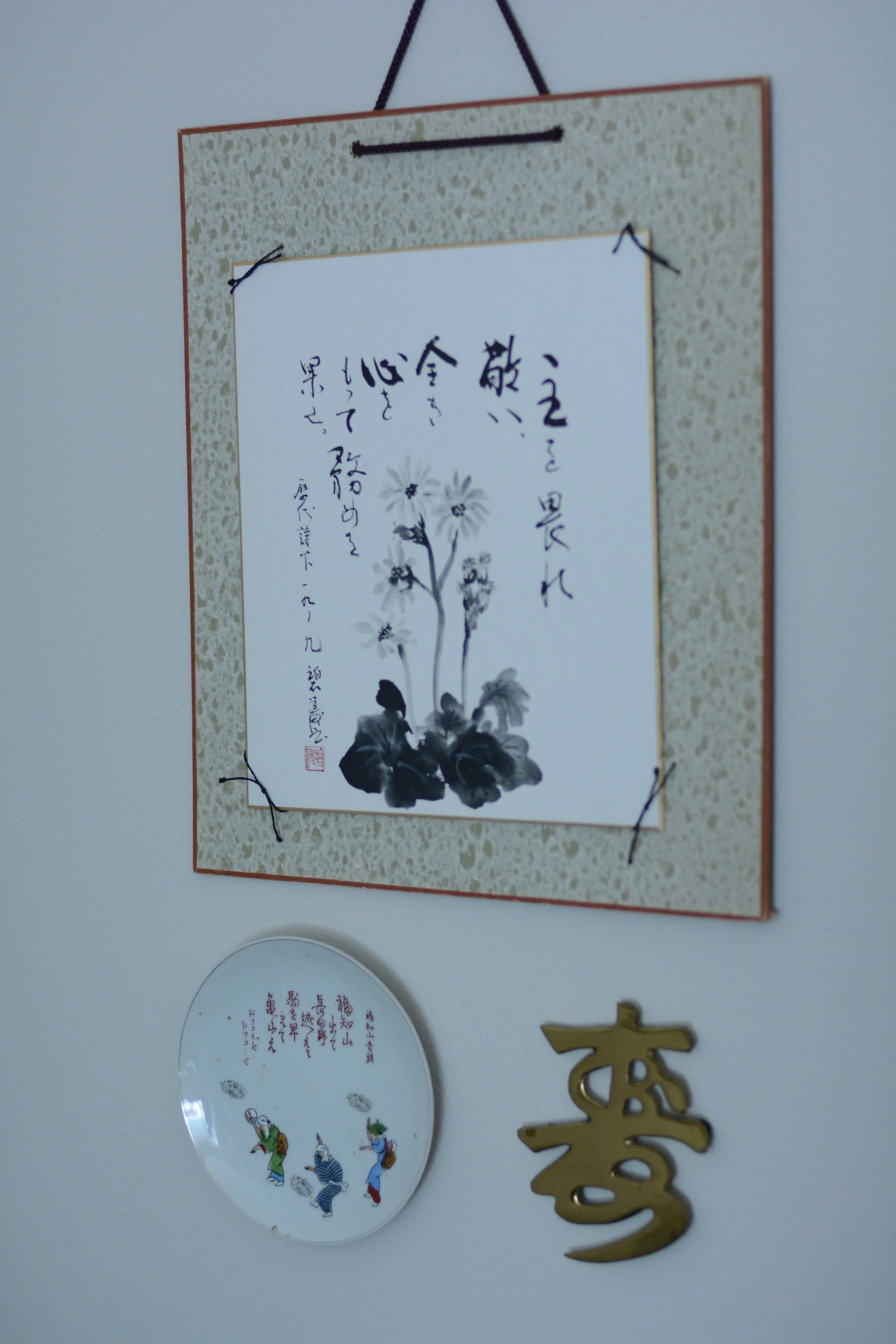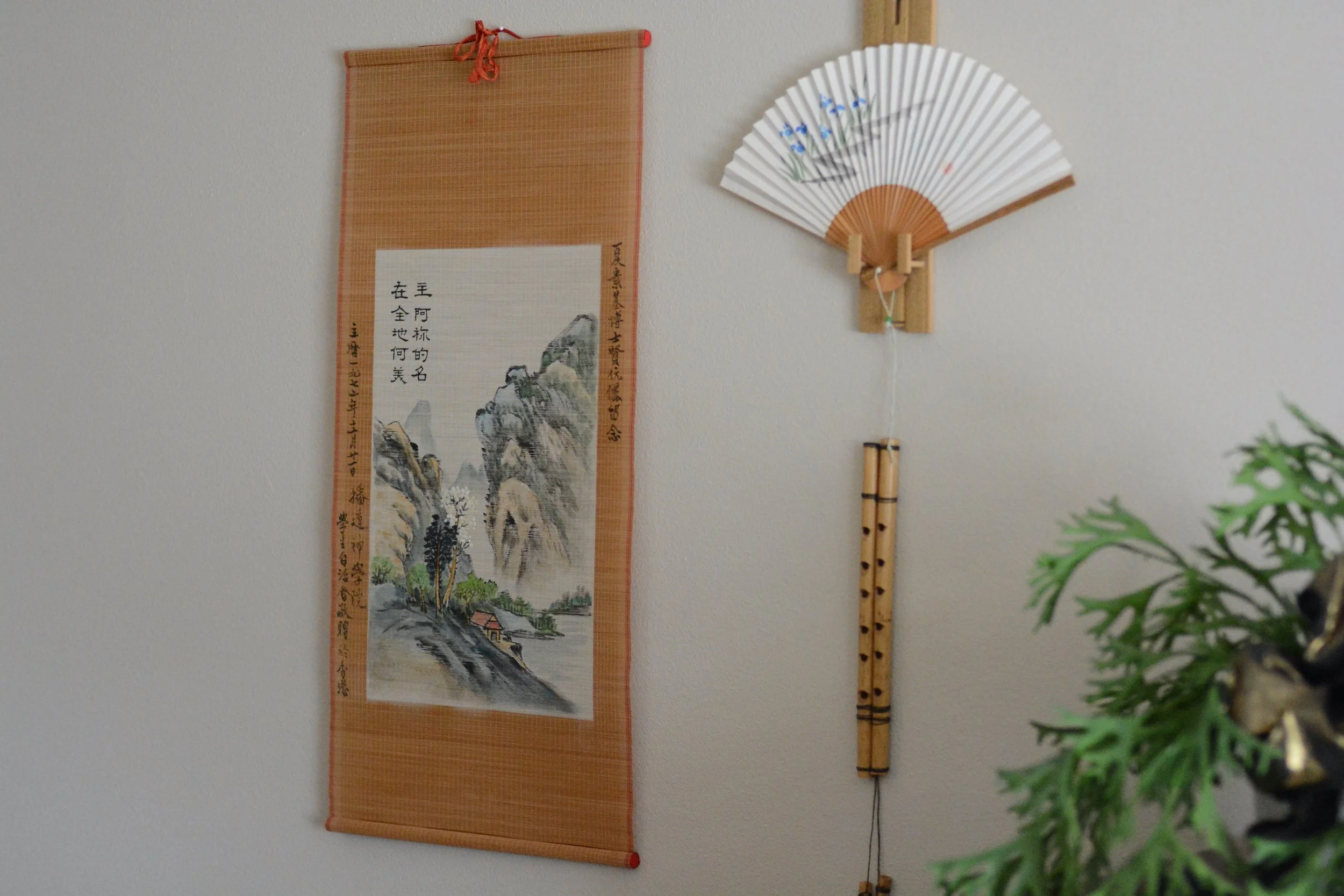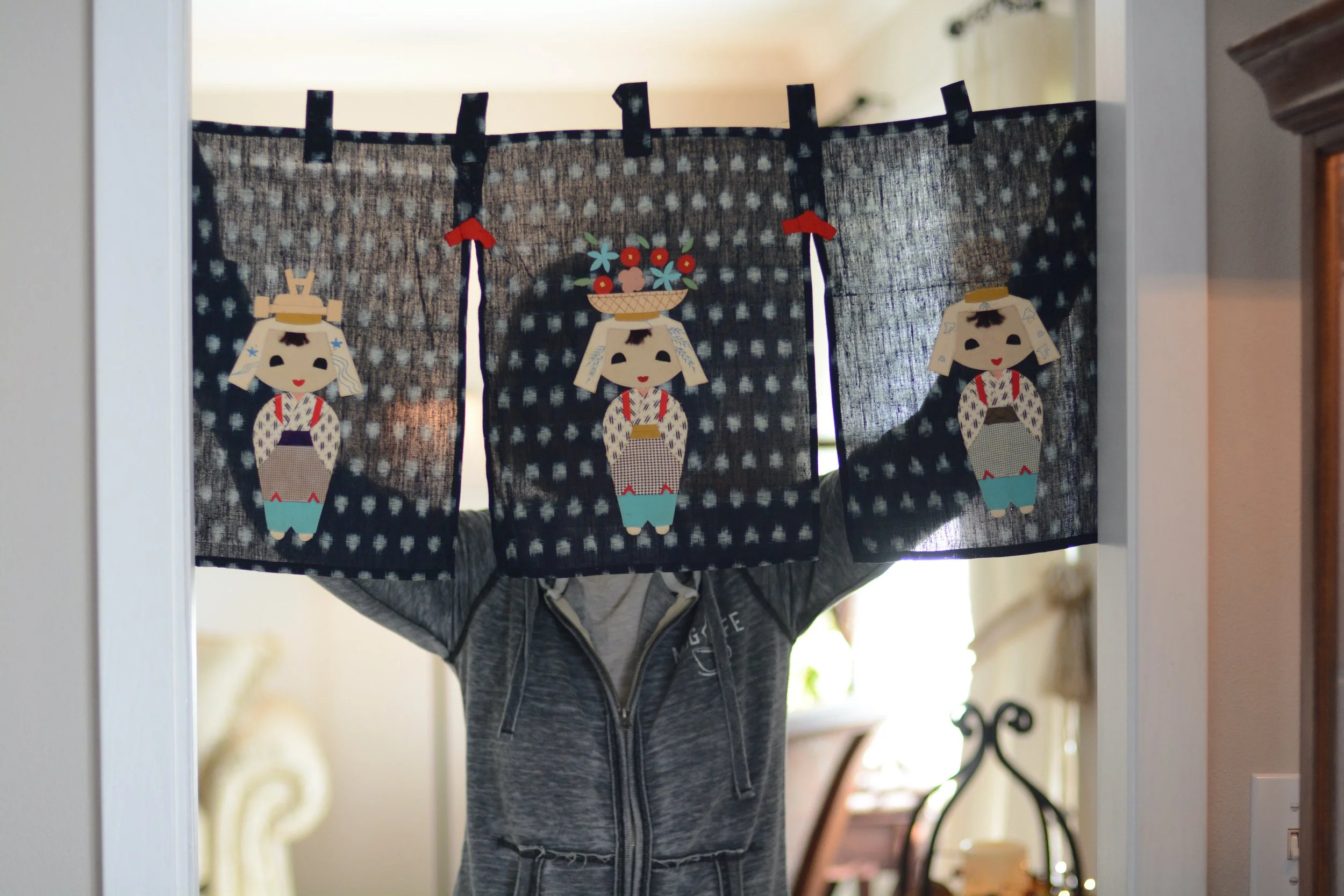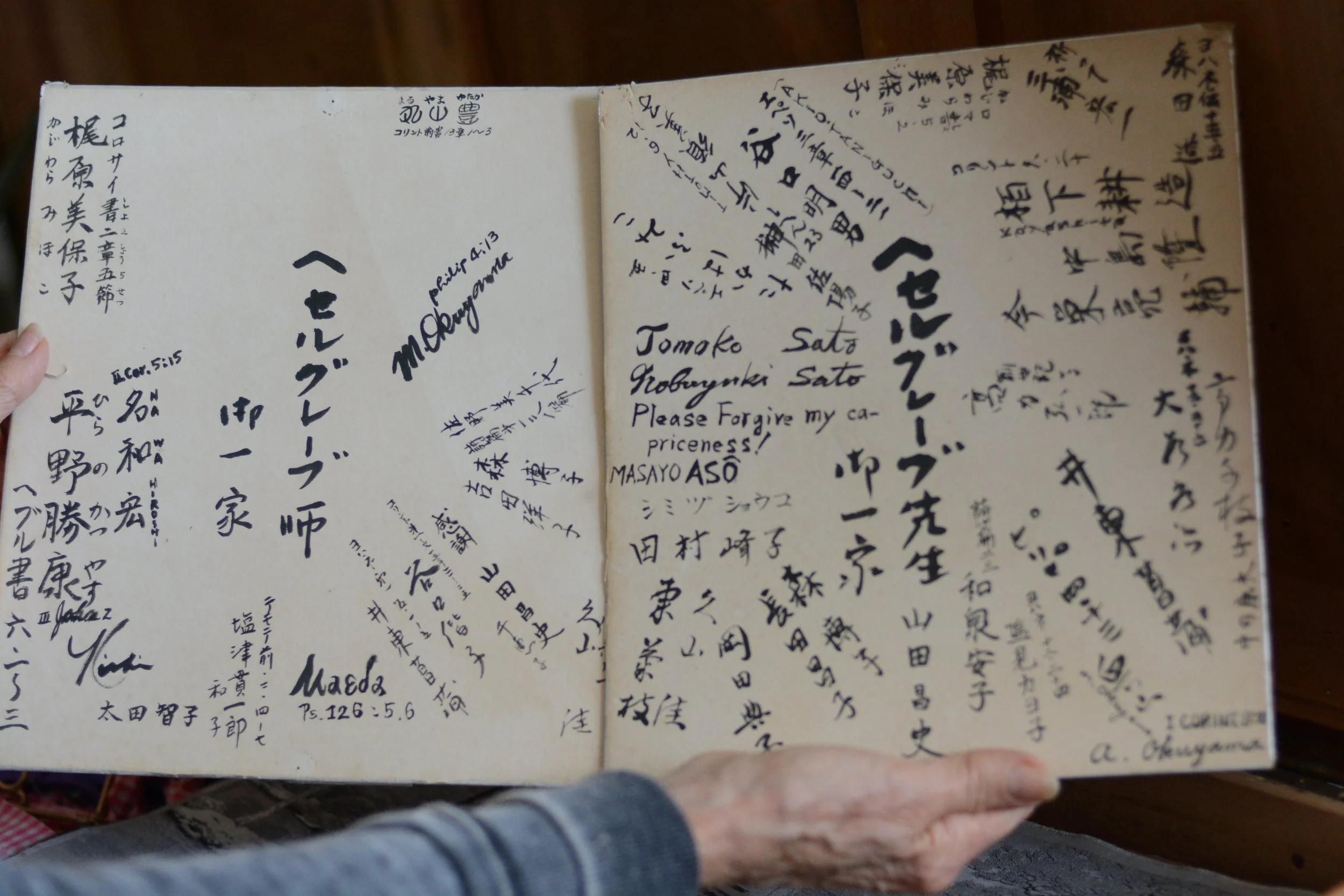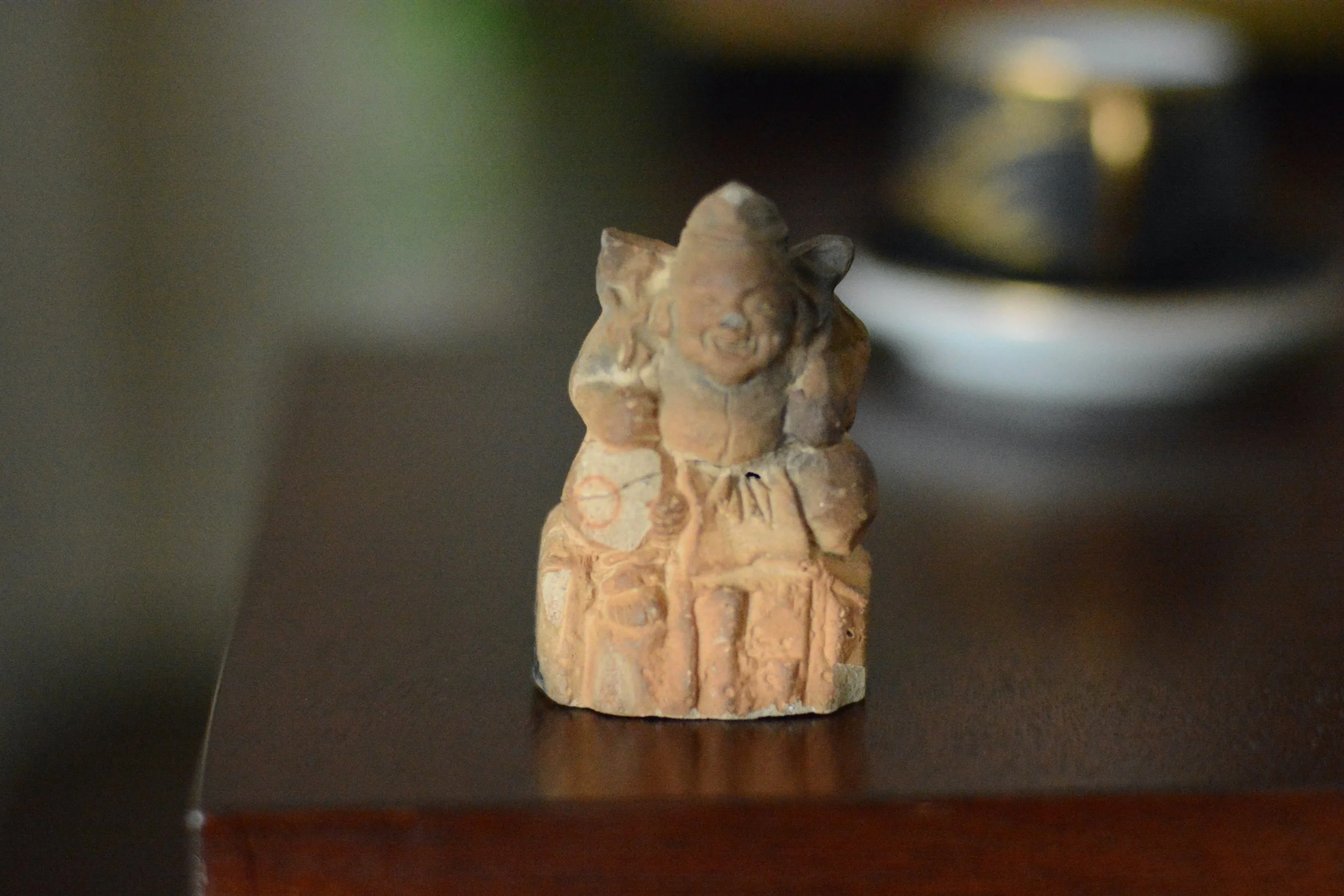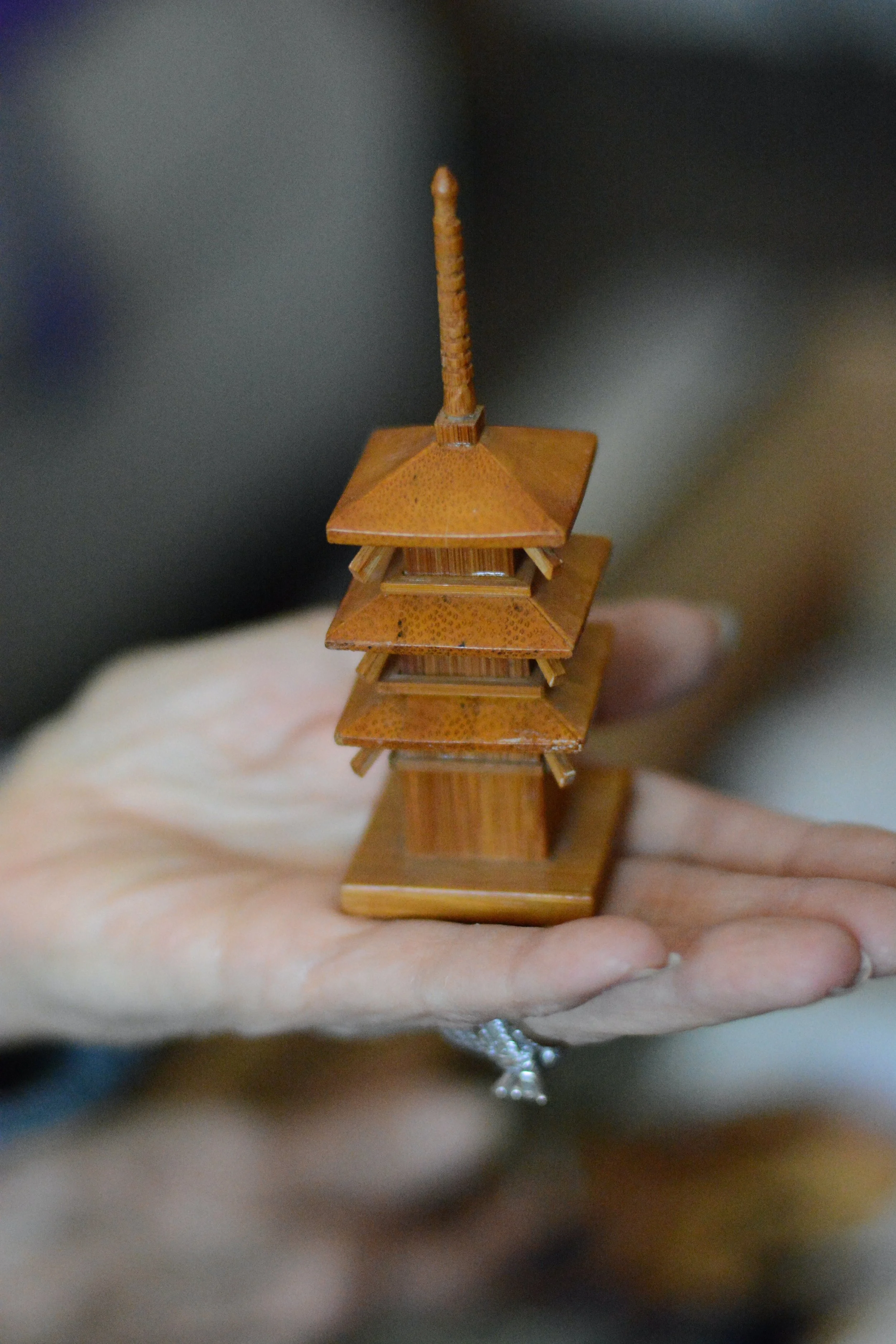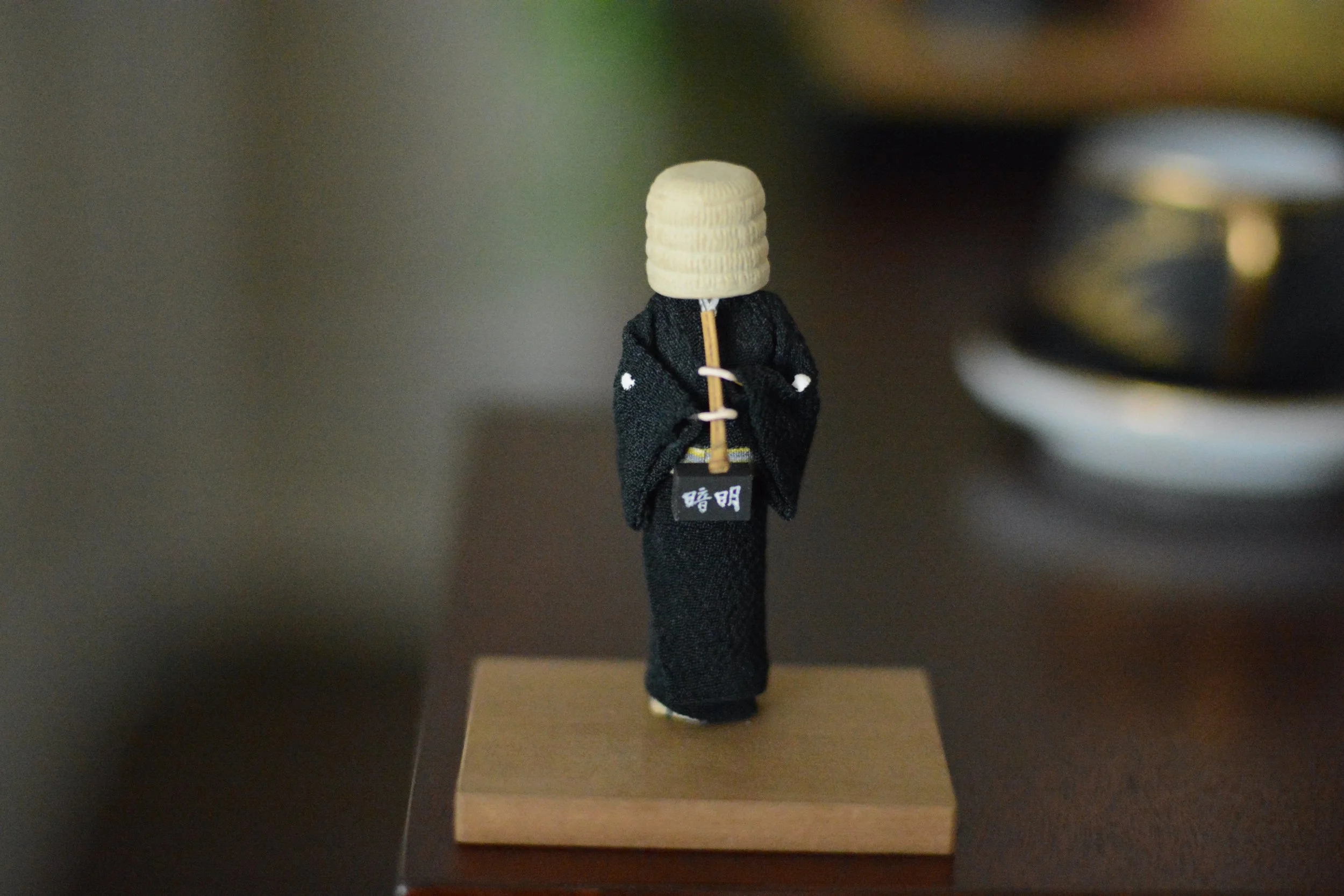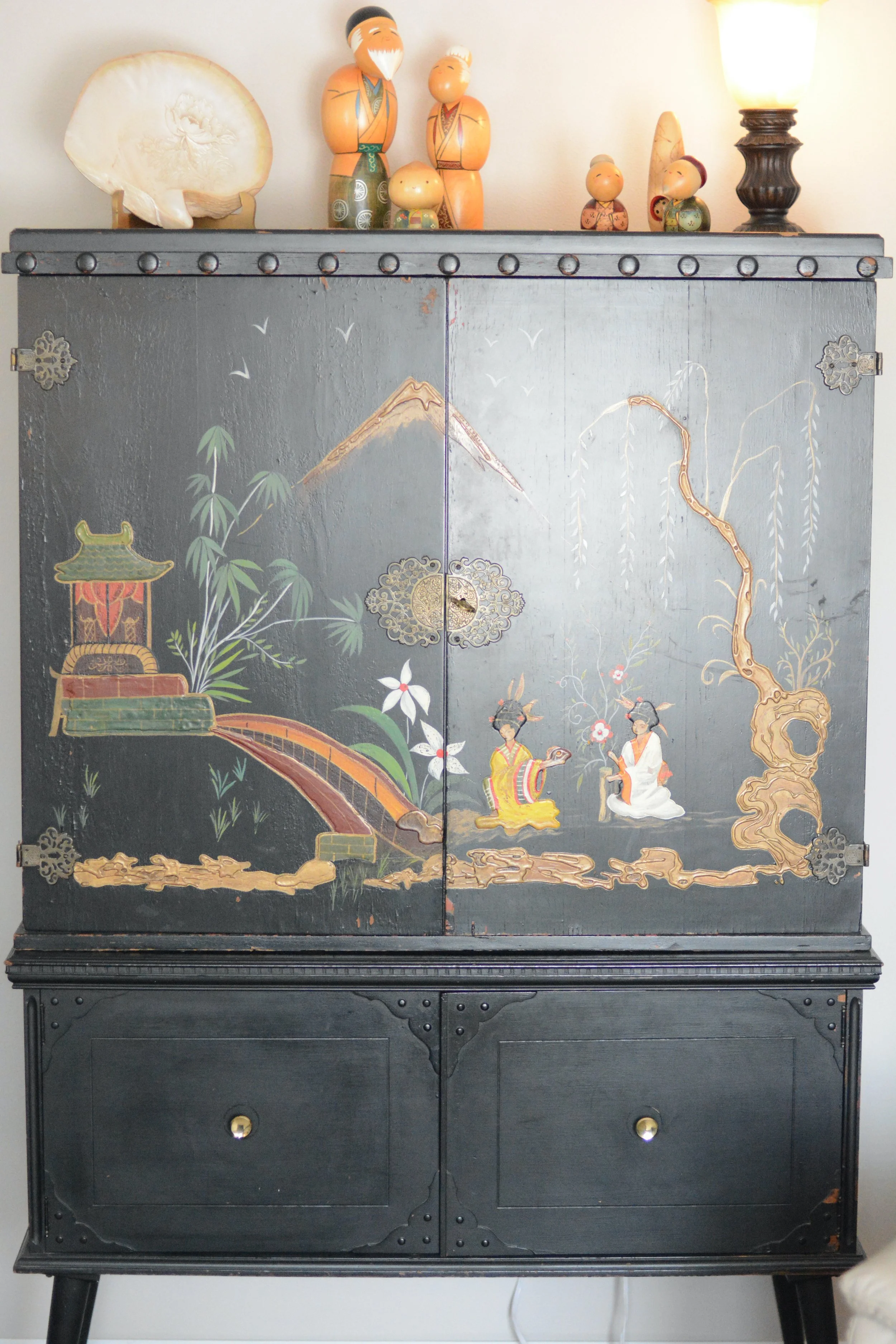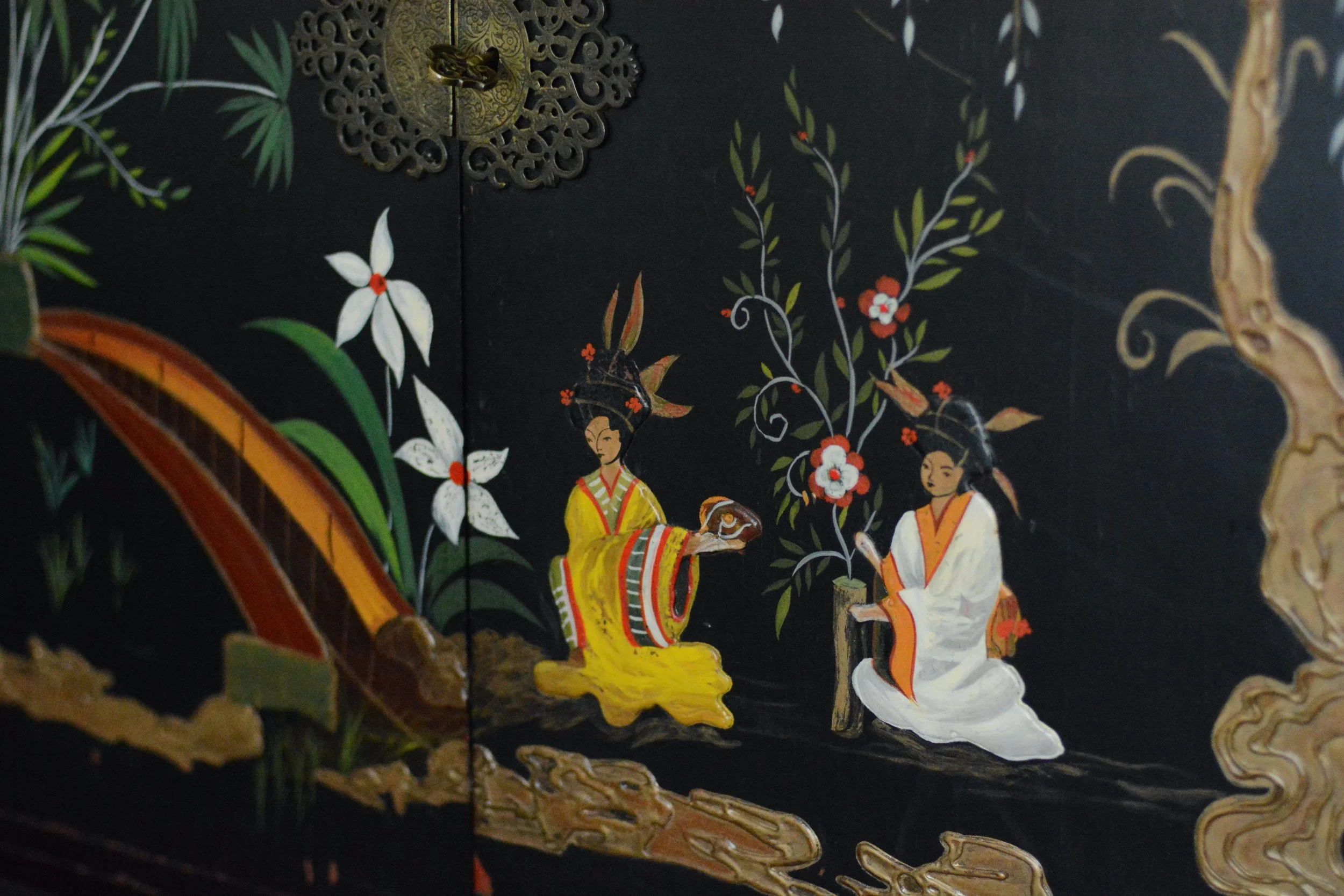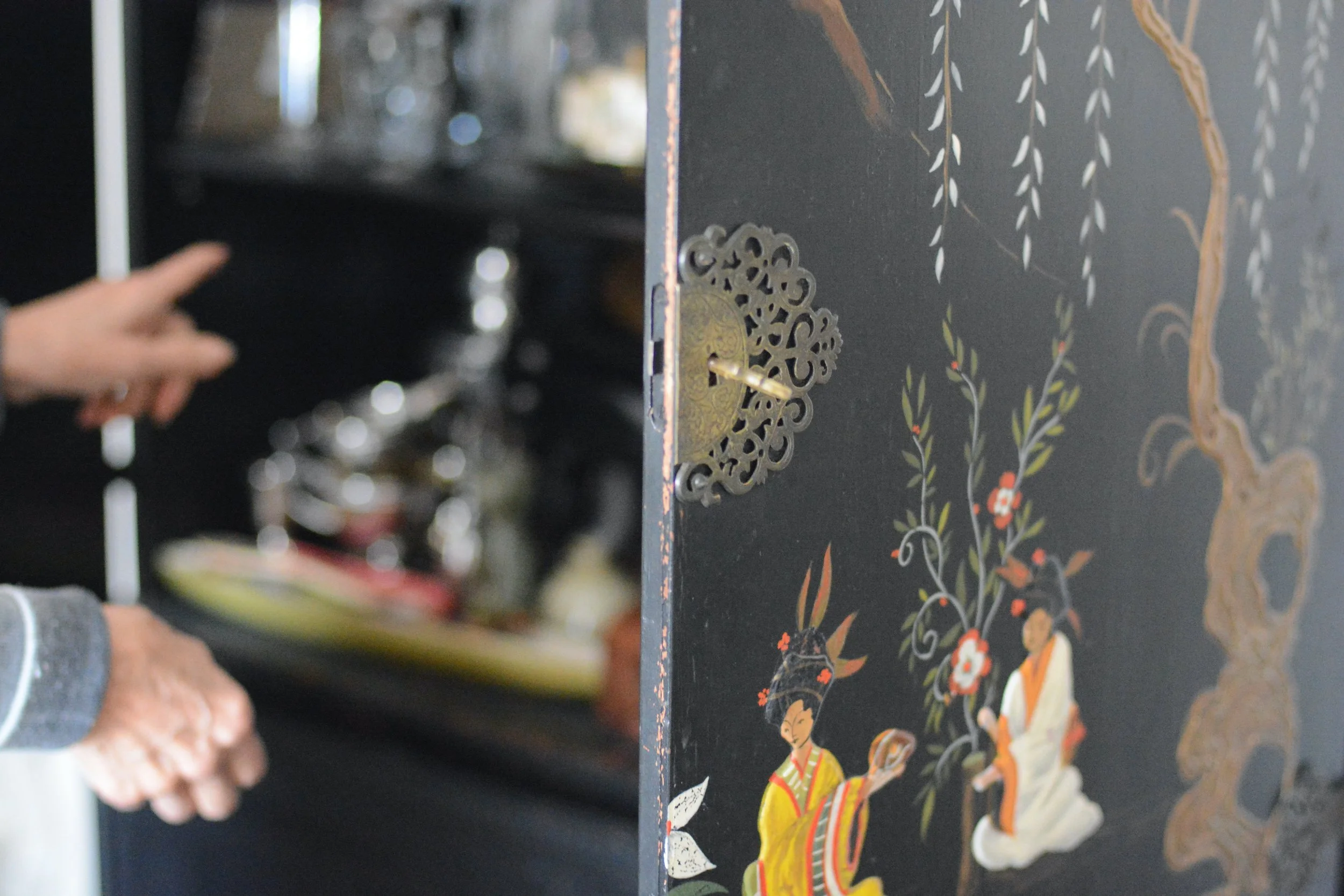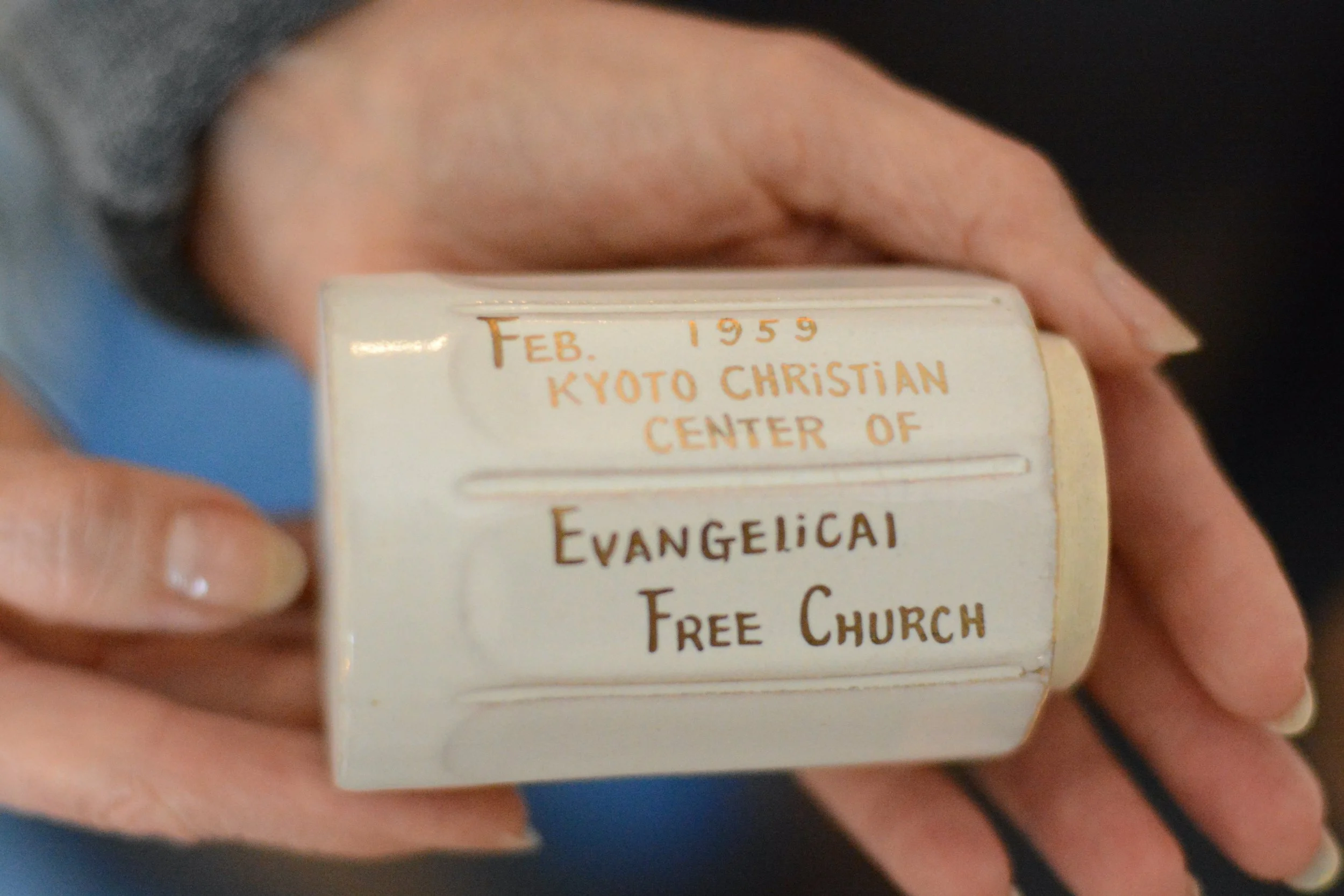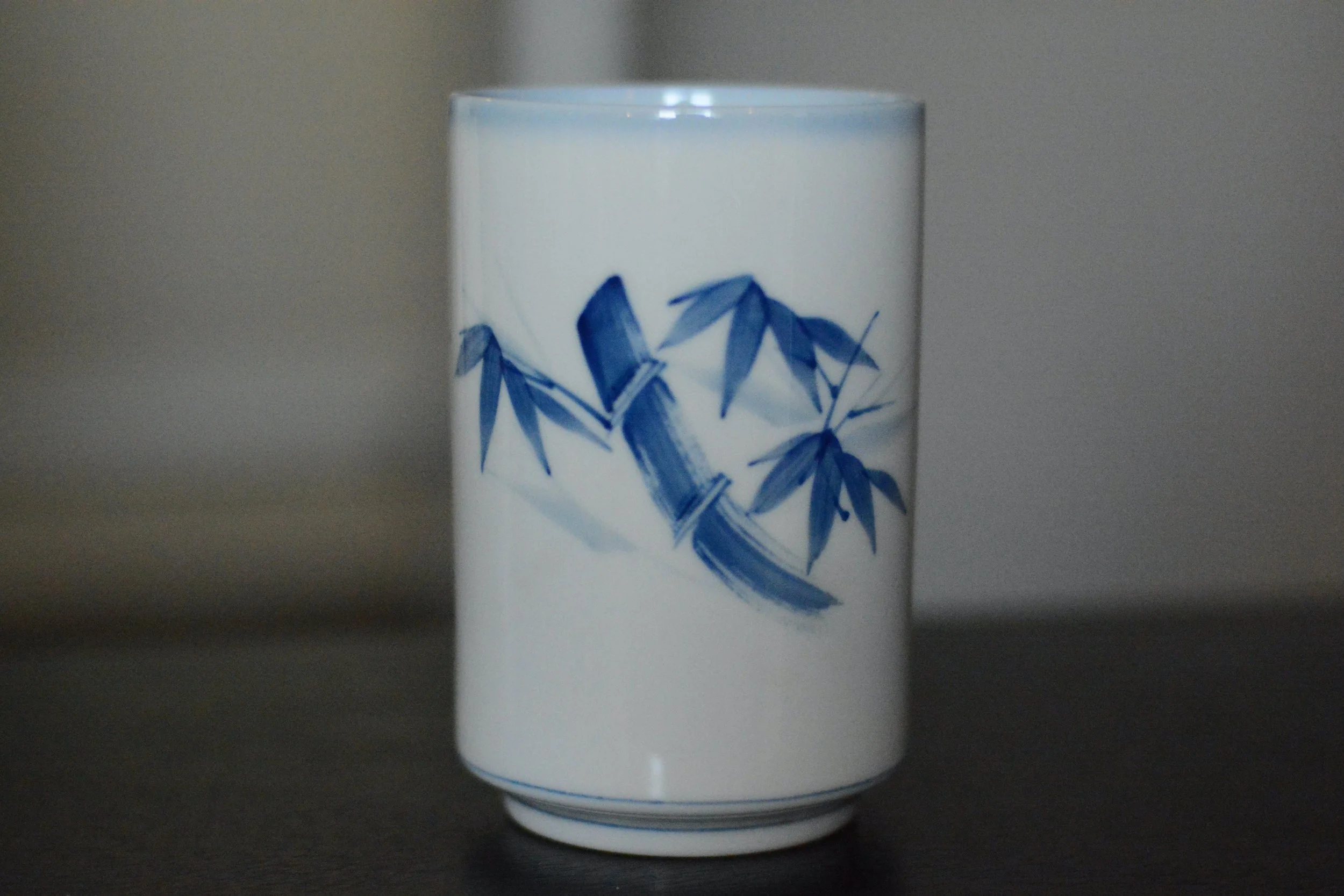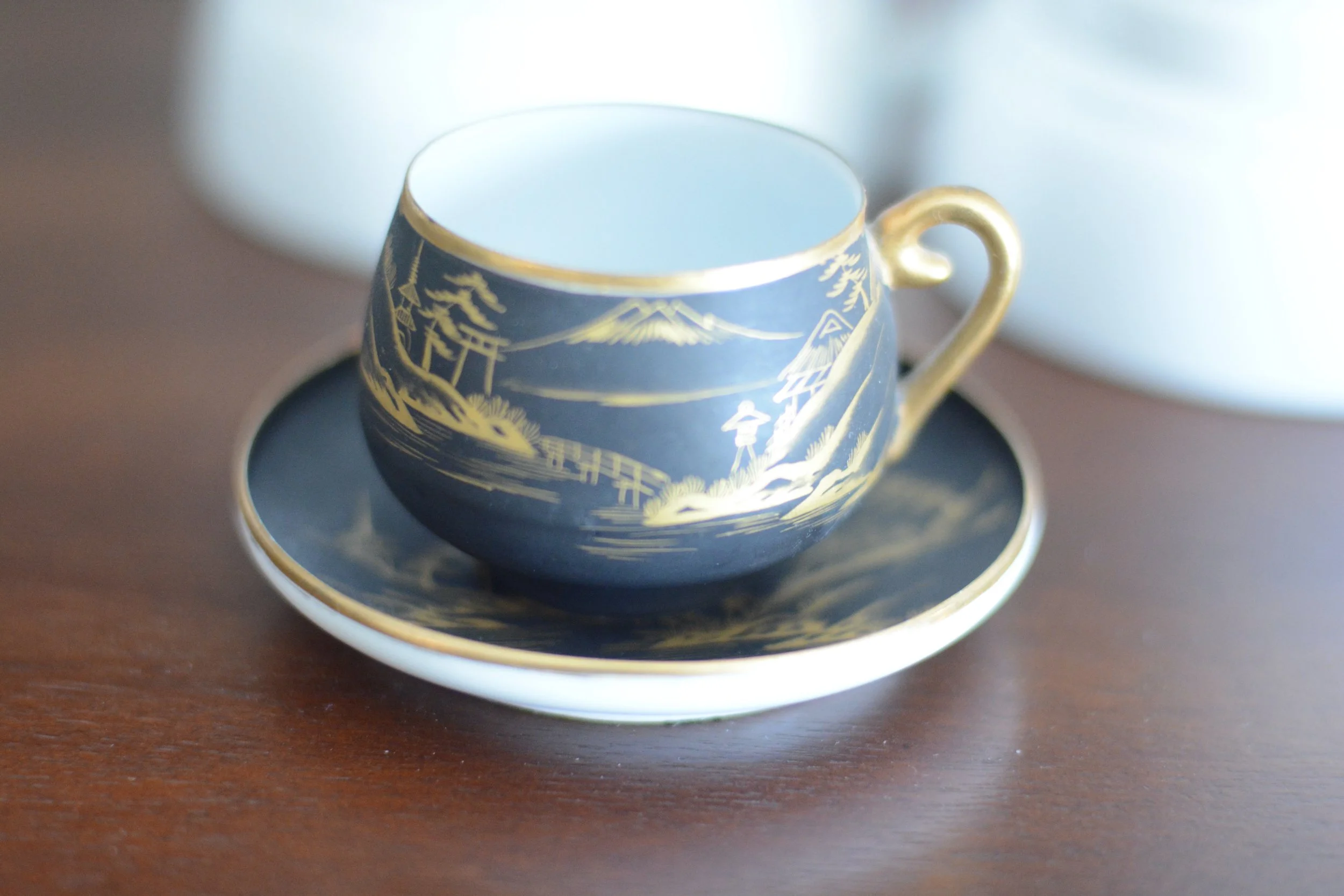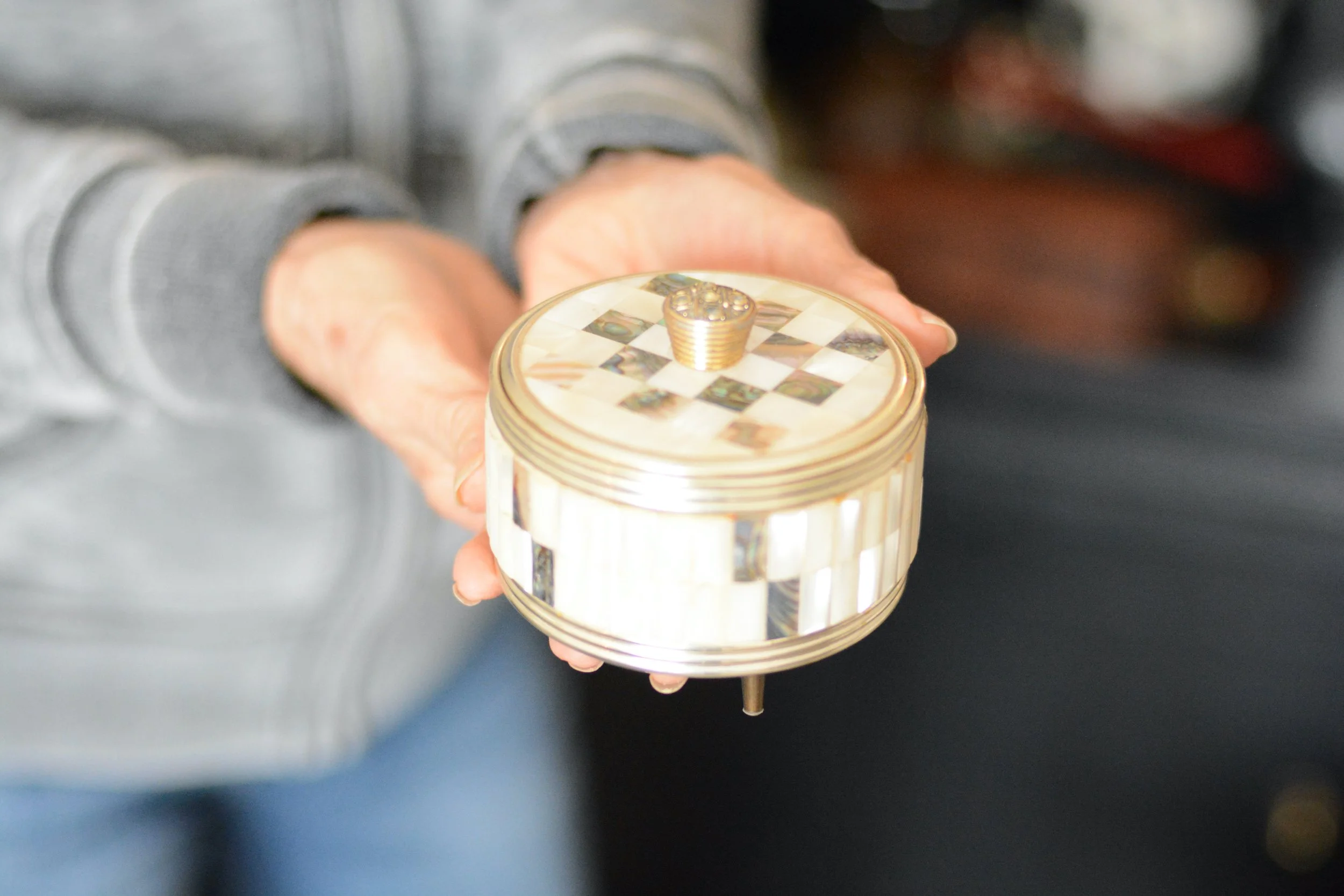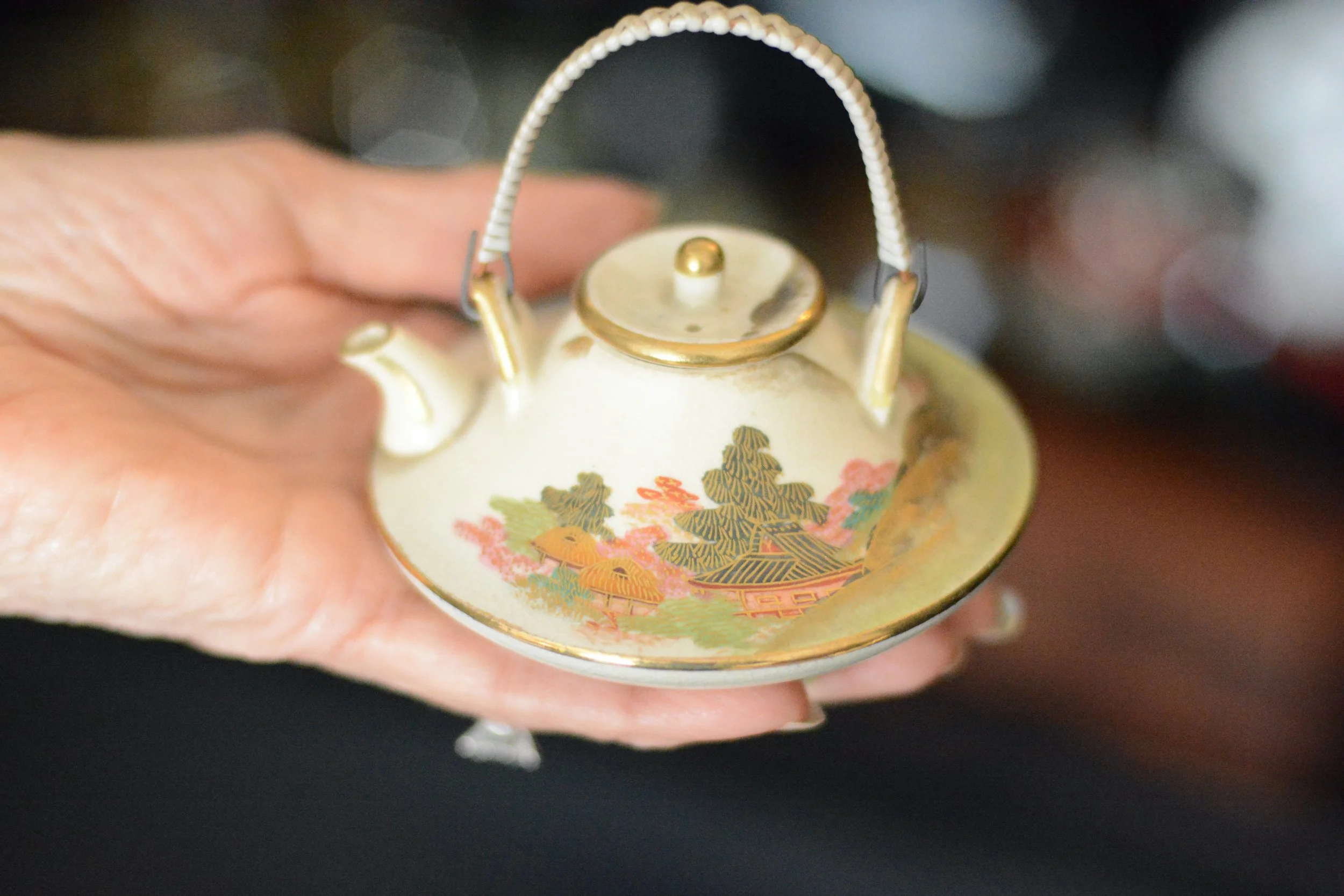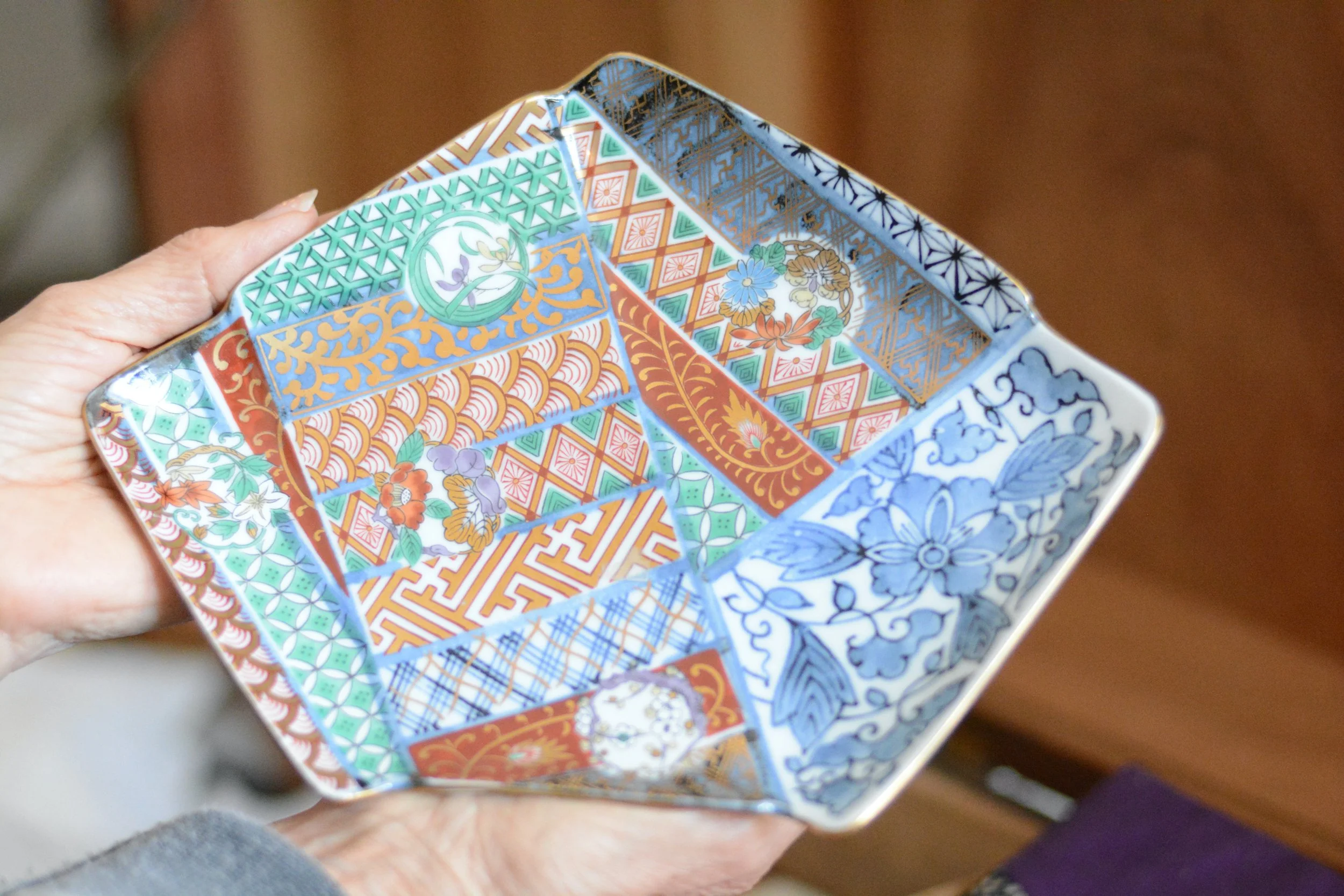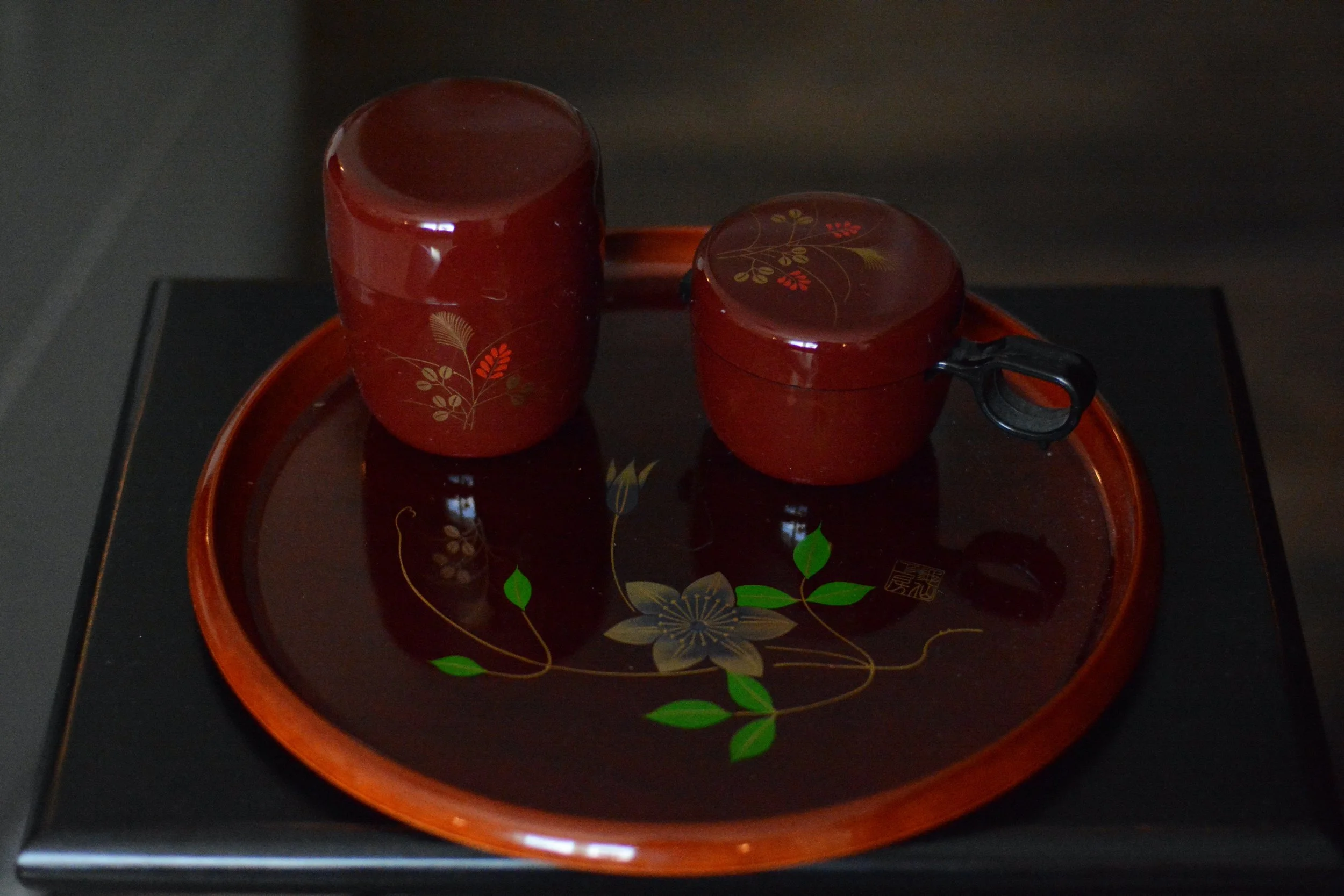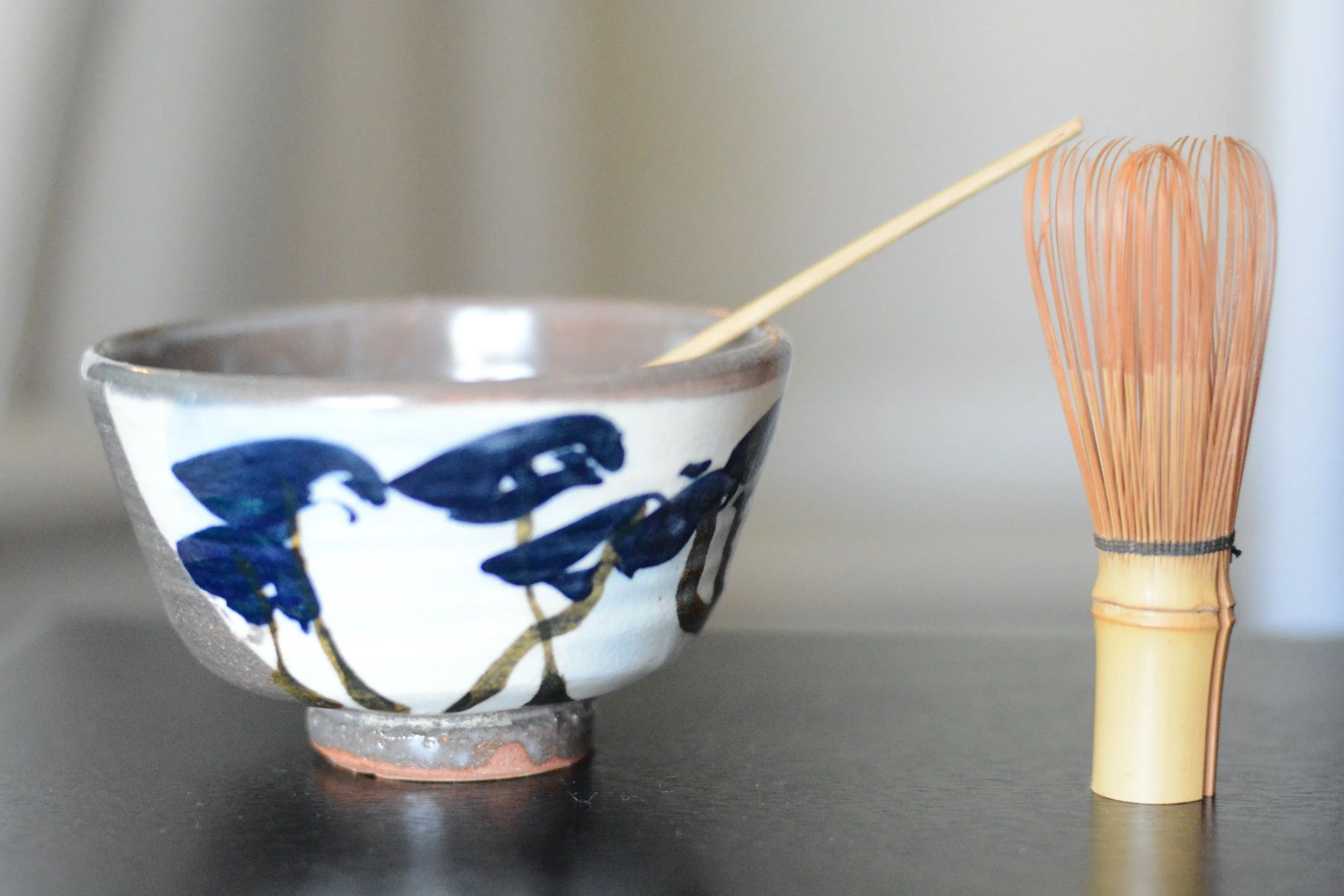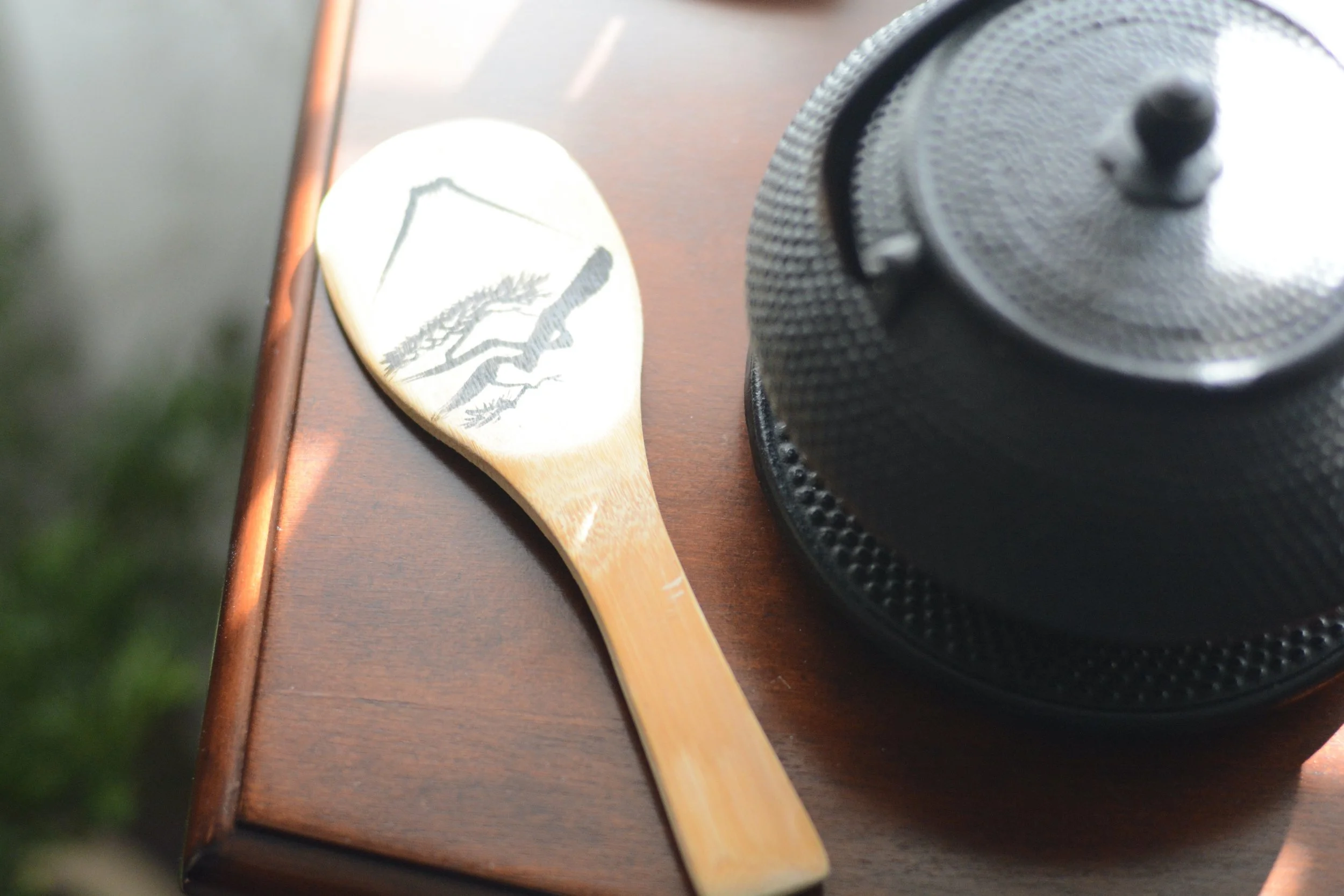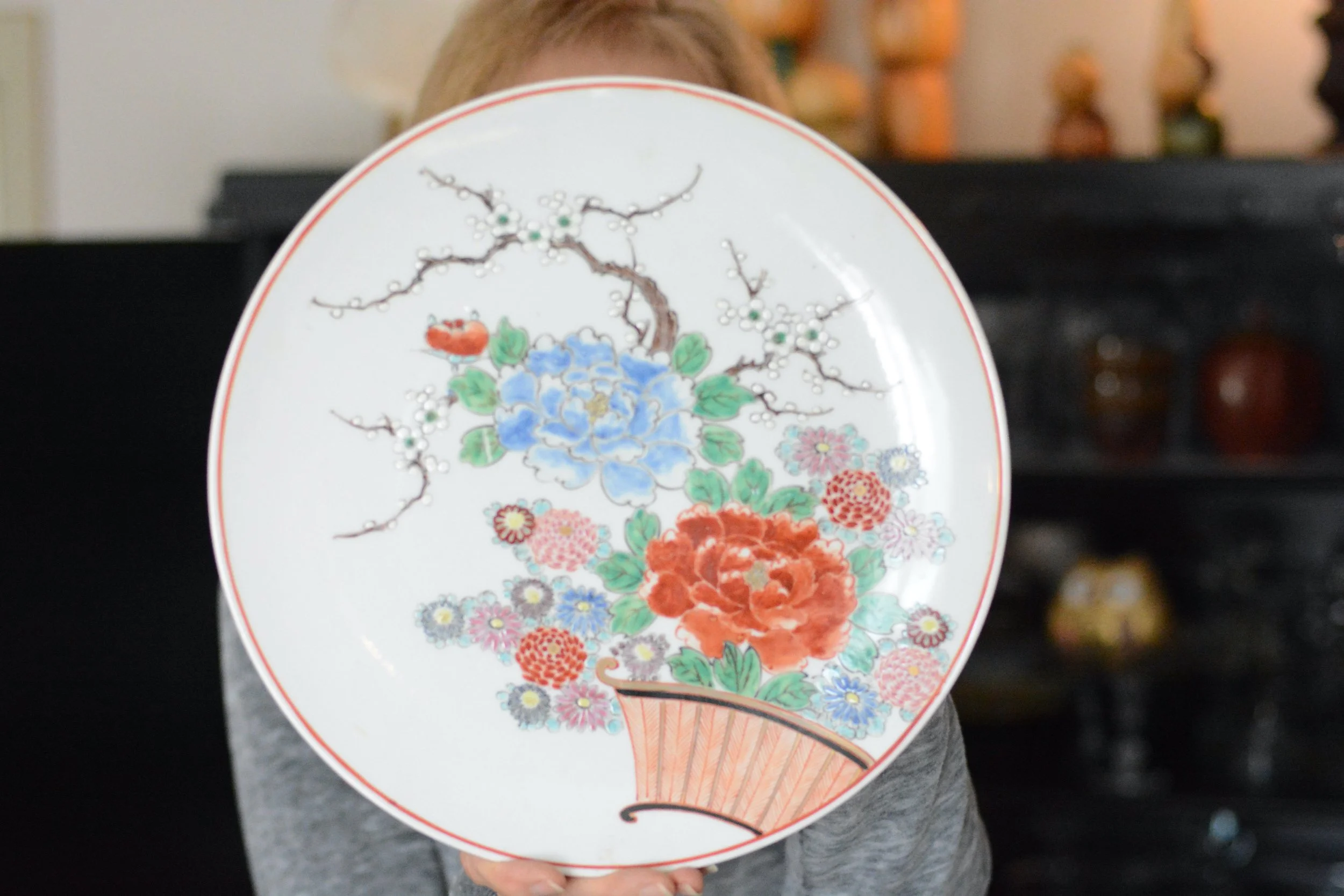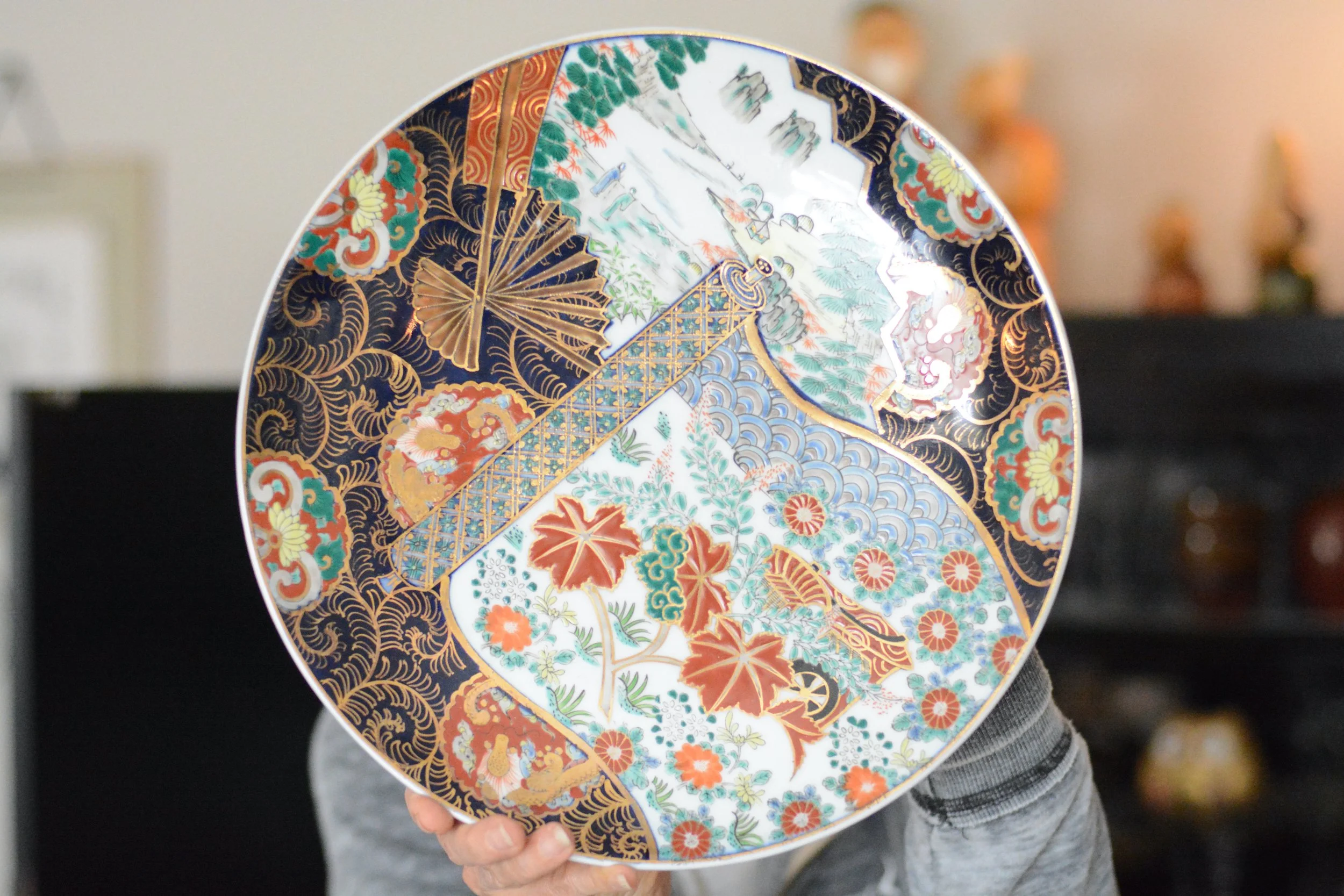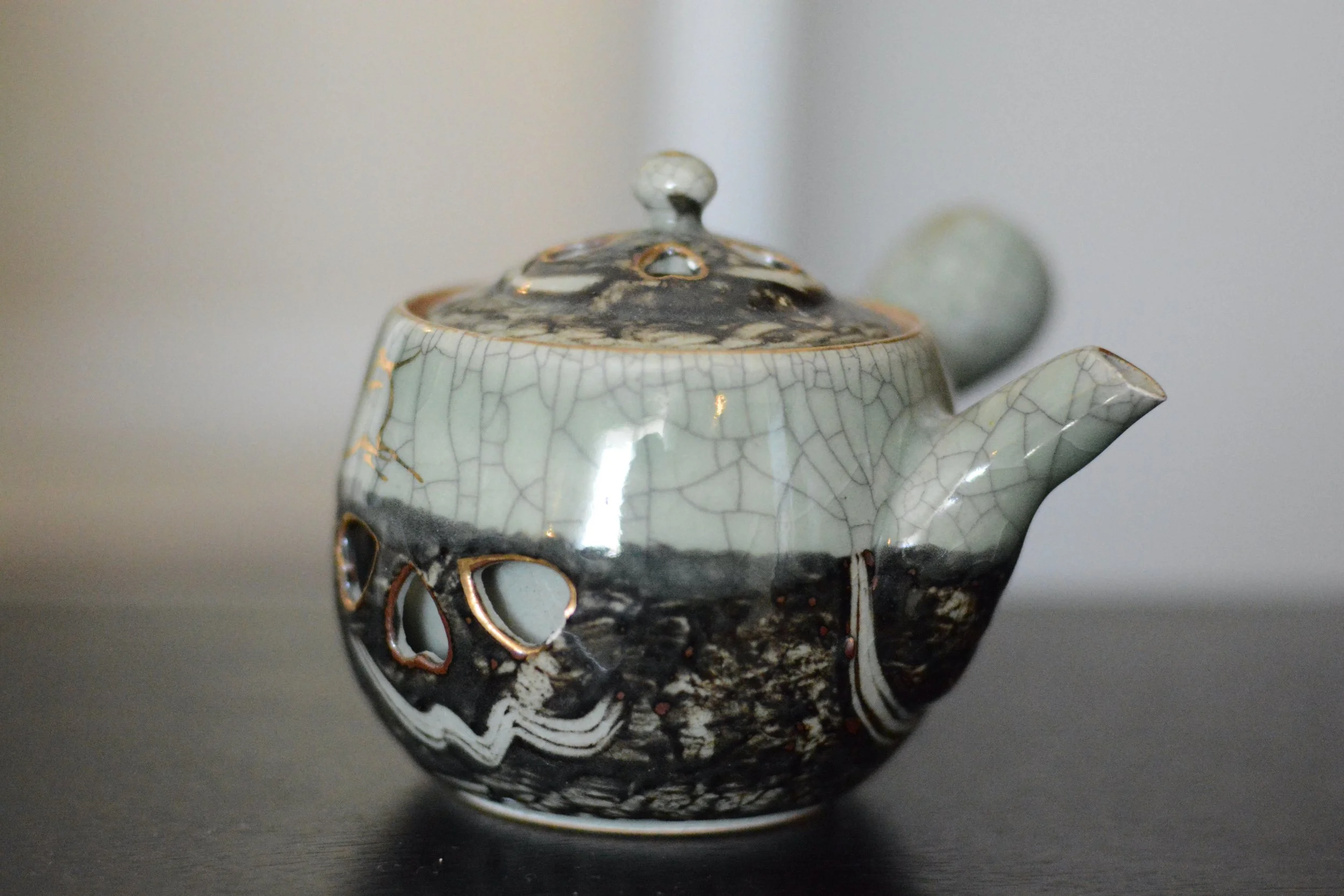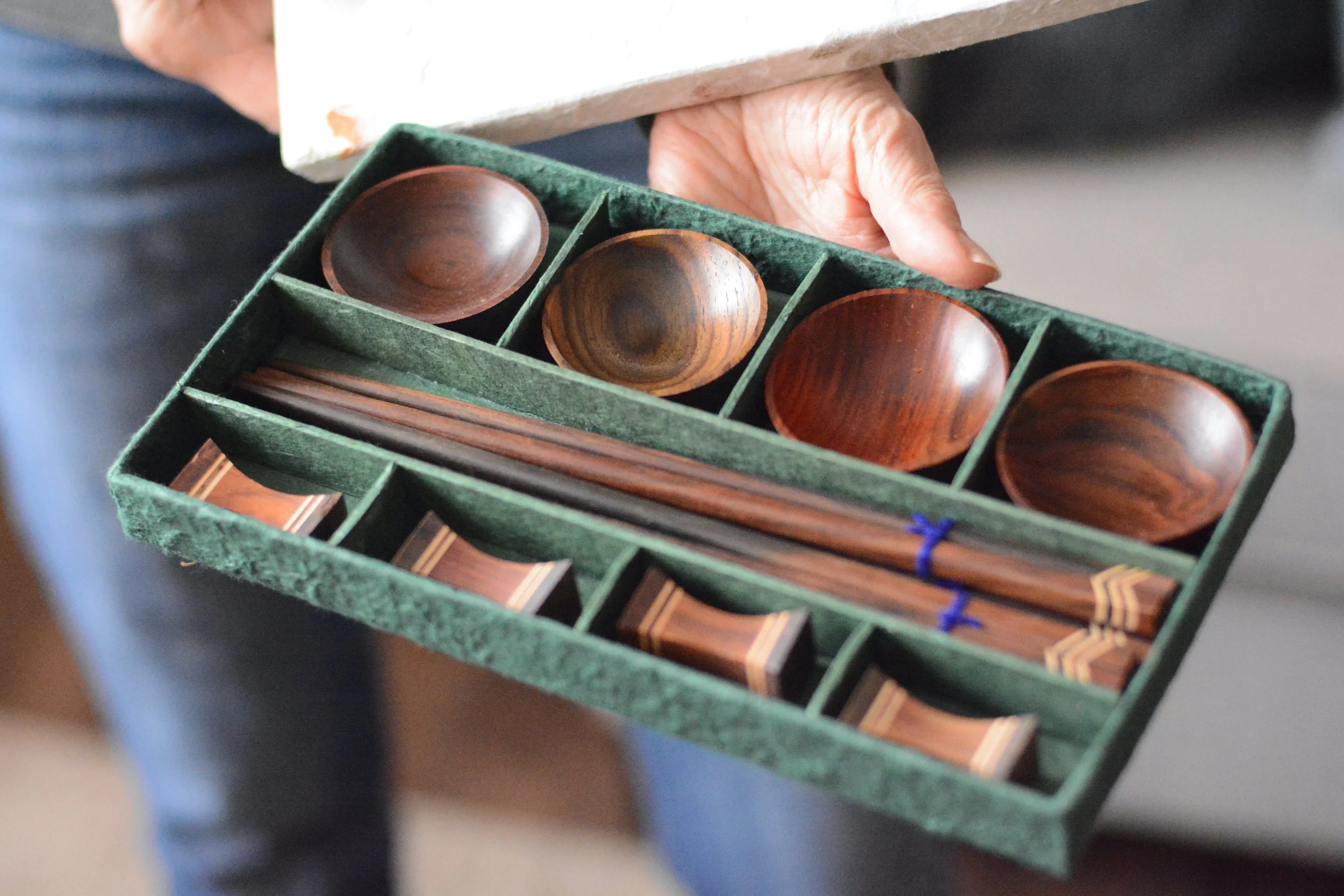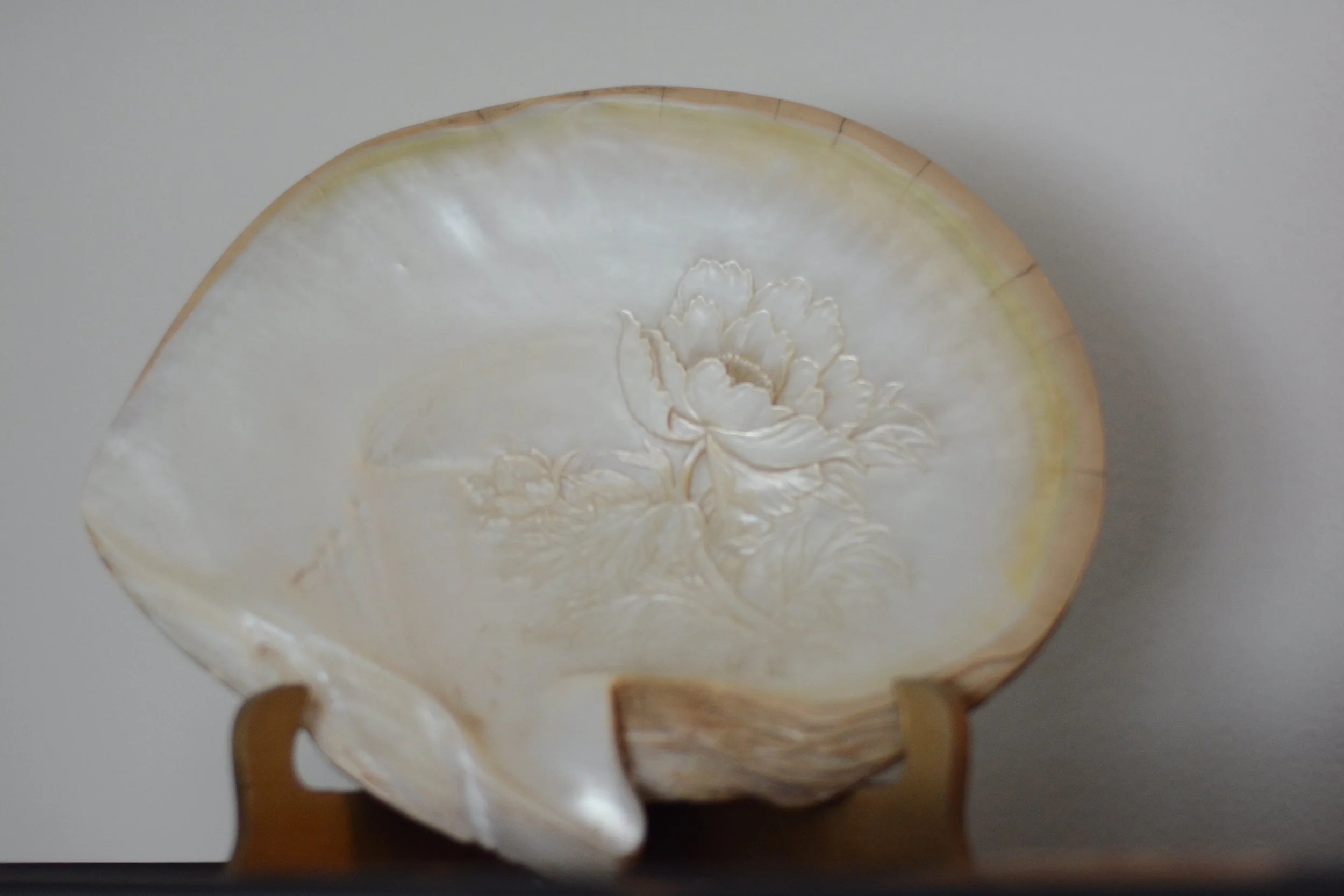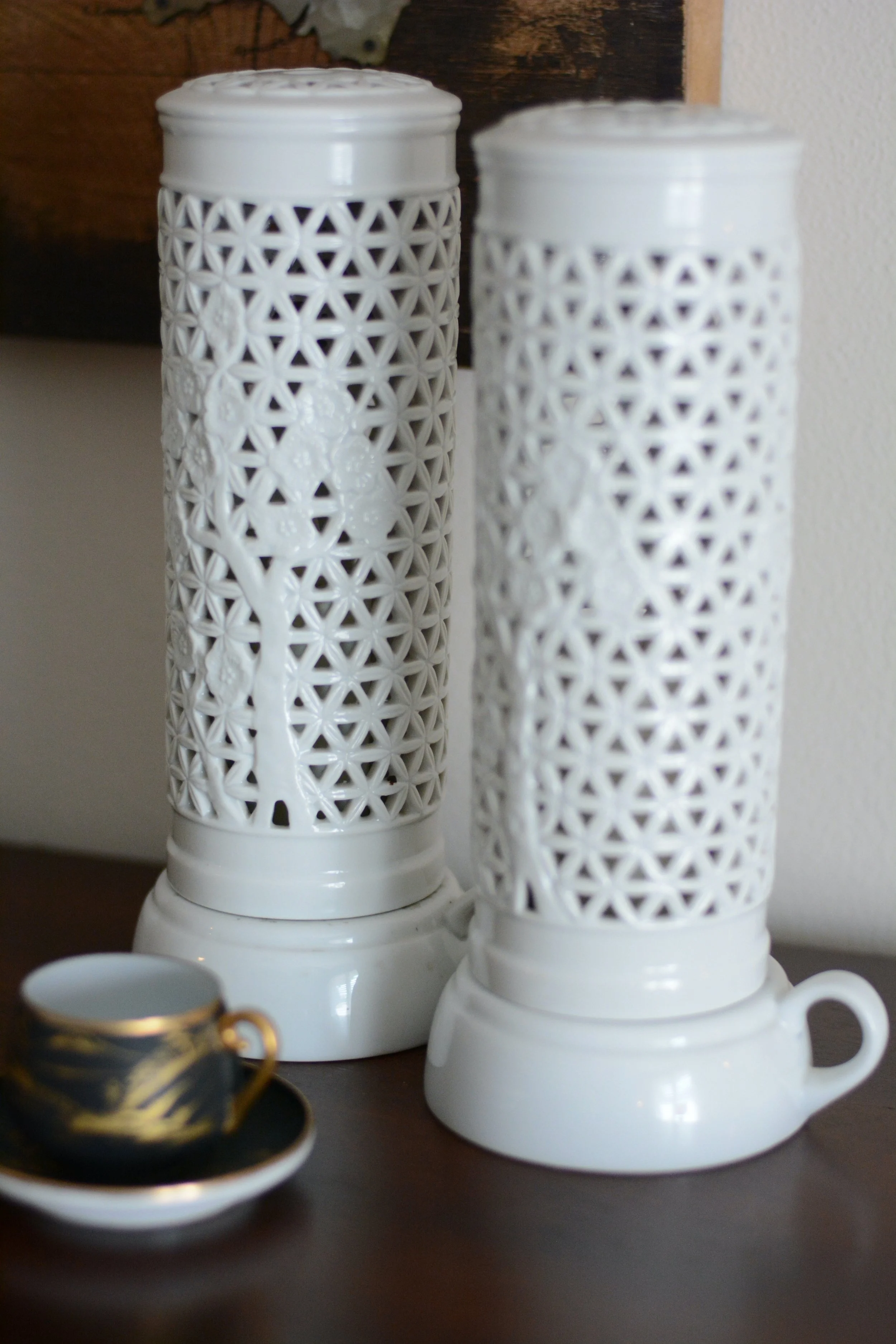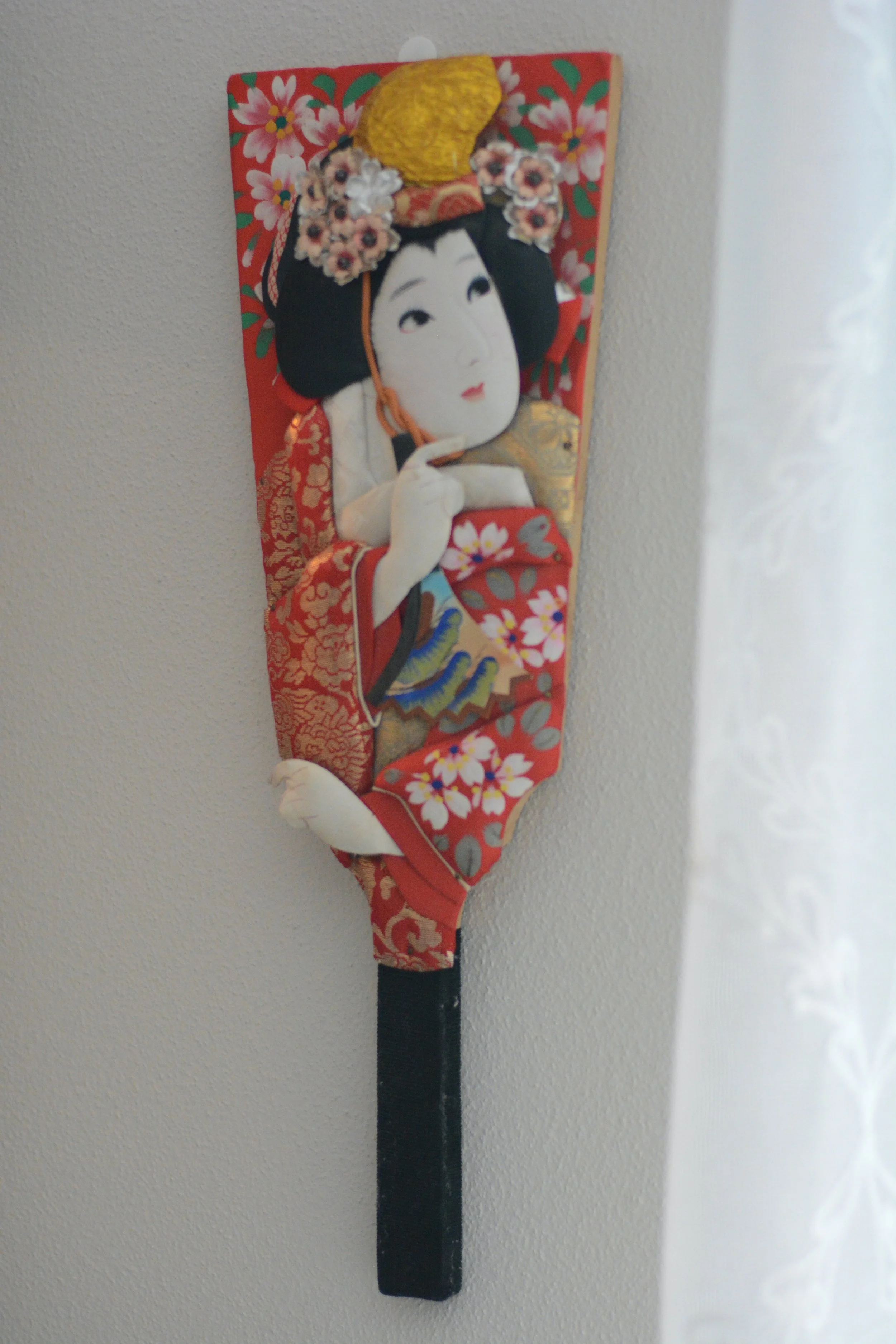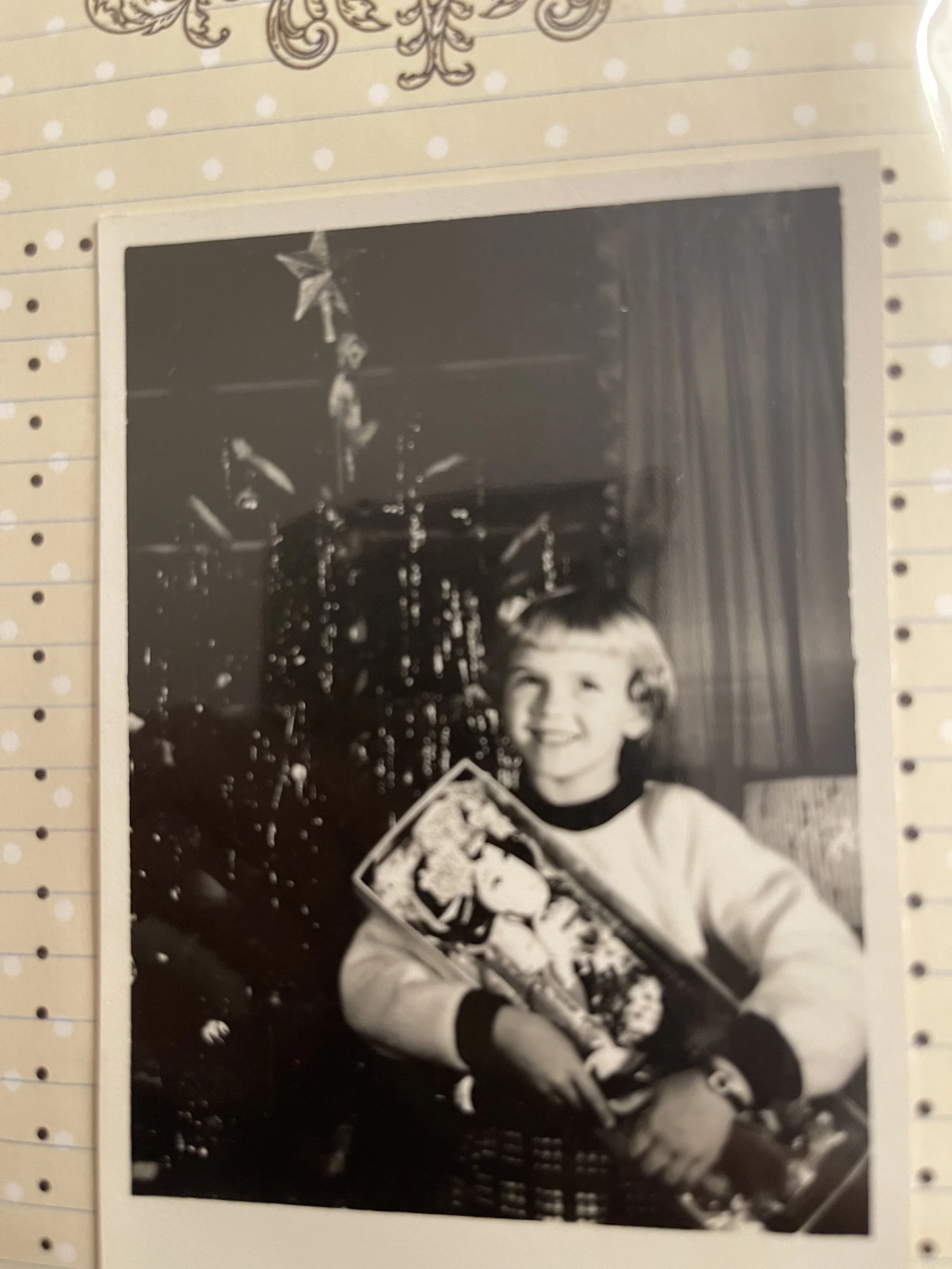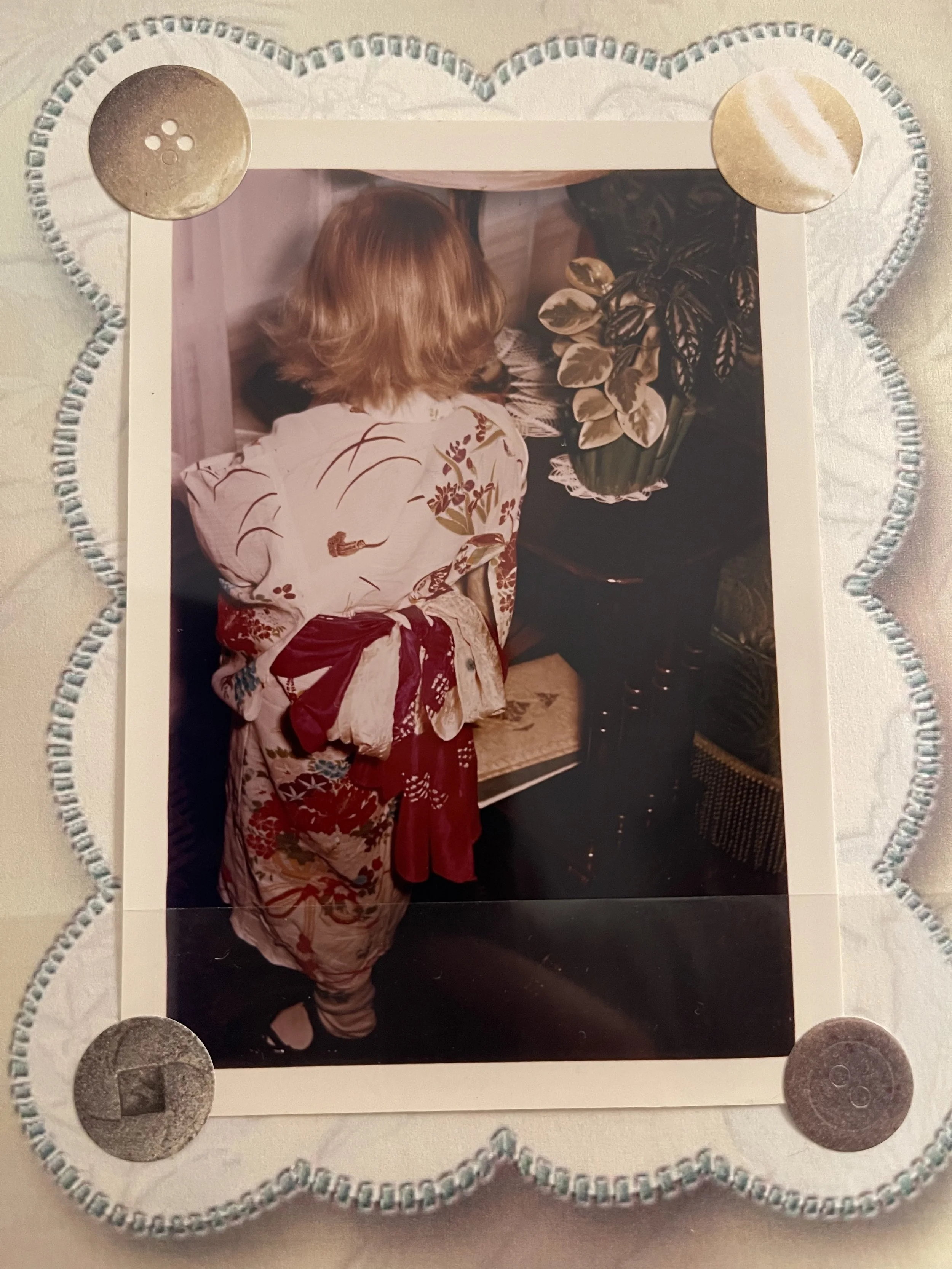Japanese Family Keepsakes and Memories
One of the joys of this blog is that I get to delve into my interests, including family memories. It seems that at my mom’s home, there is always a memory or keepsake to photograph (or a project/craft to capture!). This week, my mom and I looked at old Japanese keepsakes from when my grandparents served as missionaries there (YEARS). Let me take you on a tour of some of the items I especially want to remember from our day looking back at these famiy treasures.
The decorative figurines above of clay or ceramic are from Japan and were always displayed in my grandparents’ home (ANYTHING ELSE?).
Below, you’ll find various Kokeshi dolls. The blond-haired doll with flowers on the kimono is mine, purchased by my grandparents as a gift for me during their return visit to Japan in (YEAR).
Next, we opened the trunk from (PLACE), where artwork, figurines, and clothing are stored. But first, some jewelry boxes—and a good look at the trunk. The jewelry box with the purple flowers was always in use on my grandmother’s dresser.
Below, you’ll find my mother’s Kimono from childhood, her Geta shoes, my grandmother’s Kimono, her Zori (Japanese sandals), my grandfather’s black Geta shoes, another small pair of Geta shoes likely belonging to one of my uncles, and a baby carrier that my mom was likely held in by my grandmother and by Japanese women helpers who were a continual presence in my grandparents’ home—whether from the church or employed to do housework (as was custom). Some fancy Japanese purses are also pictured below.
My grandparents also took home from Japan some gorgeous customary fans, Sensu.
Below you’ll find some of the artwork and silks that my grandparents likely received as gifts from church members. At the end of this series of photographs, you’ll find a banner that was hung to separate rooms (i.e. hung between the kitchen and living room) in Japanese homes.
Below, Japanese church members wrote to my grandparents before they left for the States at the conclusion of their missionary term.
Thanks to AI, I know that the main heading is “for Reverend Hesselgrave and Family” and “MASAYO ASO” — “warm, humble farewell from several church members.”
Bible verses are included, with signatories of church members:
“1 Cor. 5:15” — likely meant as 2 Corinthians 5:15: “And he died for all, that those who live should no longer live for themselves…”
“Phil. 4:13 – M. Ohayama” — “I can do all things through Christ who strengthens me.”
“Ps. 126:5-6 – Maeda” — “Those who sow in tears shall reap with shouts of joy…”
“Hebrews 6:3” — “And this we will do if God permits.”
“I Corinthians 13 – A. Ohayama” — the love chapter
Other text holds the signatures of church members with short blessings:
主にありて (Shu ni arite) — “In the Lord.”
お元気で (Ogenki de) — “Please stay well” or “Take care.”
神の祝福を (Kami no shukufuku o) — “God’s blessings to you.”
感謝します (Kansha shimasu) — “With thanks” or “I’m grateful.”
お祈りしています (Oinori shiteimasu) — “I am praying for you.”
再会を楽しみに (Saikai o tanoshimi ni) — “Looking forward to seeing you again.”
主の導きがありますように (Shu no michibiki ga arimasu yō ni) — “May the Lord guide you.”
Next, we move to three figurines.
The first one pictured below survived the atomic bomb in Nagasaki in 1945! According to AI, it is Daikokuten (大黒天), one of Japan’s seven lucky gods (Shichifukujin, 七福神).
Then, we have—according to AI—a miniature wooden Japanese Pagoda (known as a tō or sotōba). The five-tiered version, though mine appears to have four main roof levels plus the spire, is called a gojū-no-tō (五重塔) and is a prominent feature in many Buddhist temples in Japan.
These would have been displayed in a typical Japanese home, especially prior to the family coming to Christ.
Finally, according to AI, the final figurine is from the mid-20th century. The combination of the dark robe and the distinct wig/headpiece is somewhat characteristic of a type of Japanese doll called a Katsura Ningyō (鬘人形), or a "Wig Doll," such as the vintage "Hanako Doll" sets. These dolls were popular collectibles, often sold with multiple interchangeable wigs to represent different hairstyles or roles (like a Geisha, Maiko, or various Kabuki characters—all of which are Japanese entertainers).
After my mom and I looked through the family trunk, we moved on to the Japanese cabinet below. This cabinet… (ANY DETAILS?).
Inside were many treasures, including a cup for tea that was used by the Free Church my grandparents planted in Japan and a favorite blue-accented vase of my grandmother’s.
Finally, a beautiful mother of pearl display, two candle holders, and a paddle—a Hagoita—my mom used as a child for games (such as Hanetsuki, a game similar to badminton that was played at traditional Japanese New Year celebrations).
Here are a couple of photographs of my mother—with her game paddle and with her Kimono as a child!
